Designing Spaces, Defining Lifestyles!
With decades of expertise, our team of architects and interior designers crafts sophisticated interiors rooted in design excellence and sustainable practices.
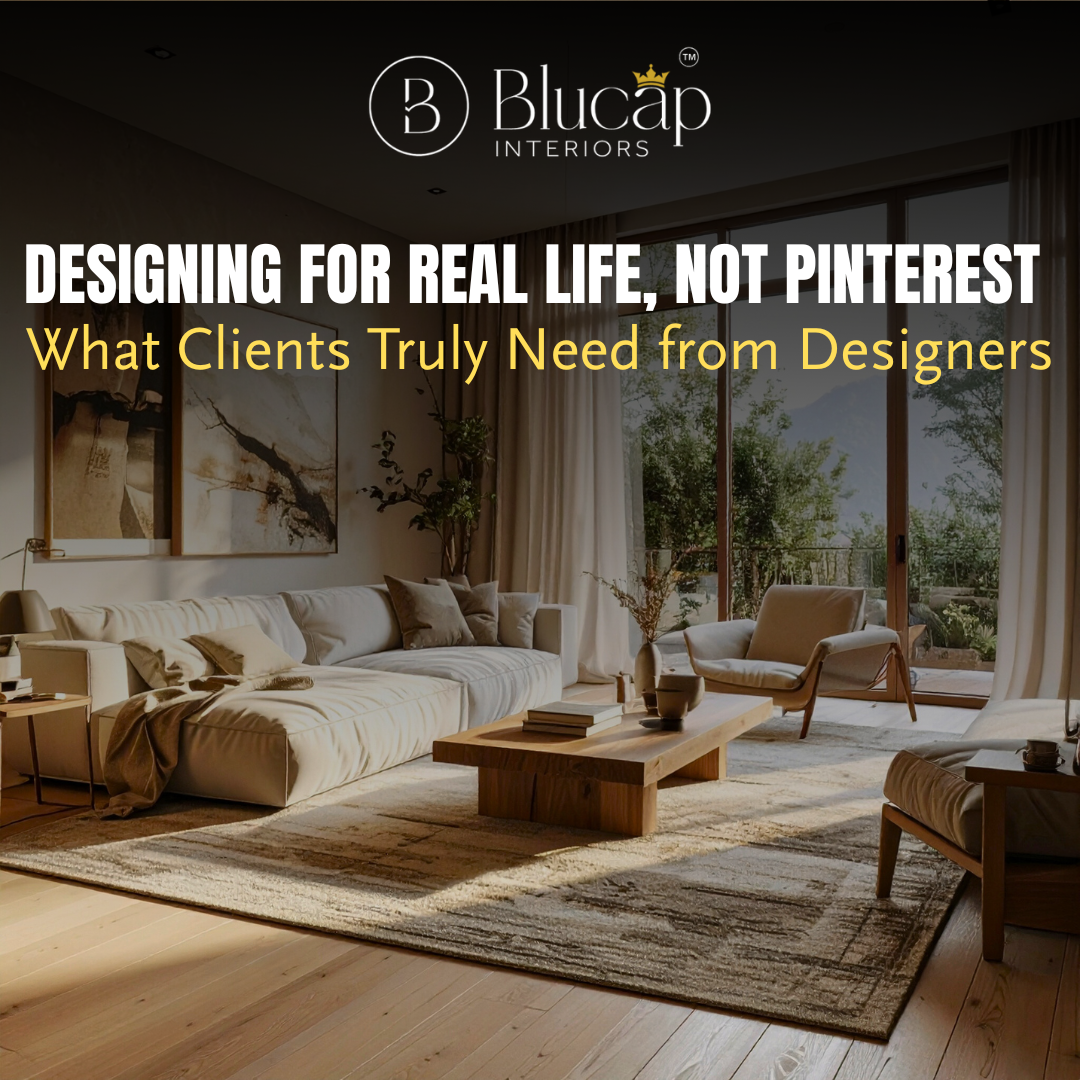
In a world enamored by digital perfection, design has become a visual performance. We scroll through flawless interiors that appear effortless yet feel curiously detached from reality. At Blucap Interiors, we see through the illusion — because real design doesn’t exist for applause or aesthetics alone; it exists to enhance the human experience.
The most exquisite homes are not those that look immaculate, but those that live beautifully. They exude warmth, evolve with time, and tell stories that no photograph can fully capture.
At Blucap Interiors, we believe that true elegance begins with purpose. A home must first serve before it can seduce. Every space we design starts with understanding how life flows through it — how a family gathers, how light dances across the walls at dusk, how footsteps echo on different surfaces. These subtleties shape every proportion, every joinery line, every nuanced material choice.
Function, when designed with sensitivity, disappears into experience. It’s in the silent glide of a drawer, the tactile delight of a well-chosen handle, the intuitive alignment of furniture that supports daily rhythm without demanding attention.
We see beauty not as ornamentation but as the quiet consequence of things working just right. The luxury lies in the invisible — the unspoken comfort that allows people to inhabit their homes effortlessly.
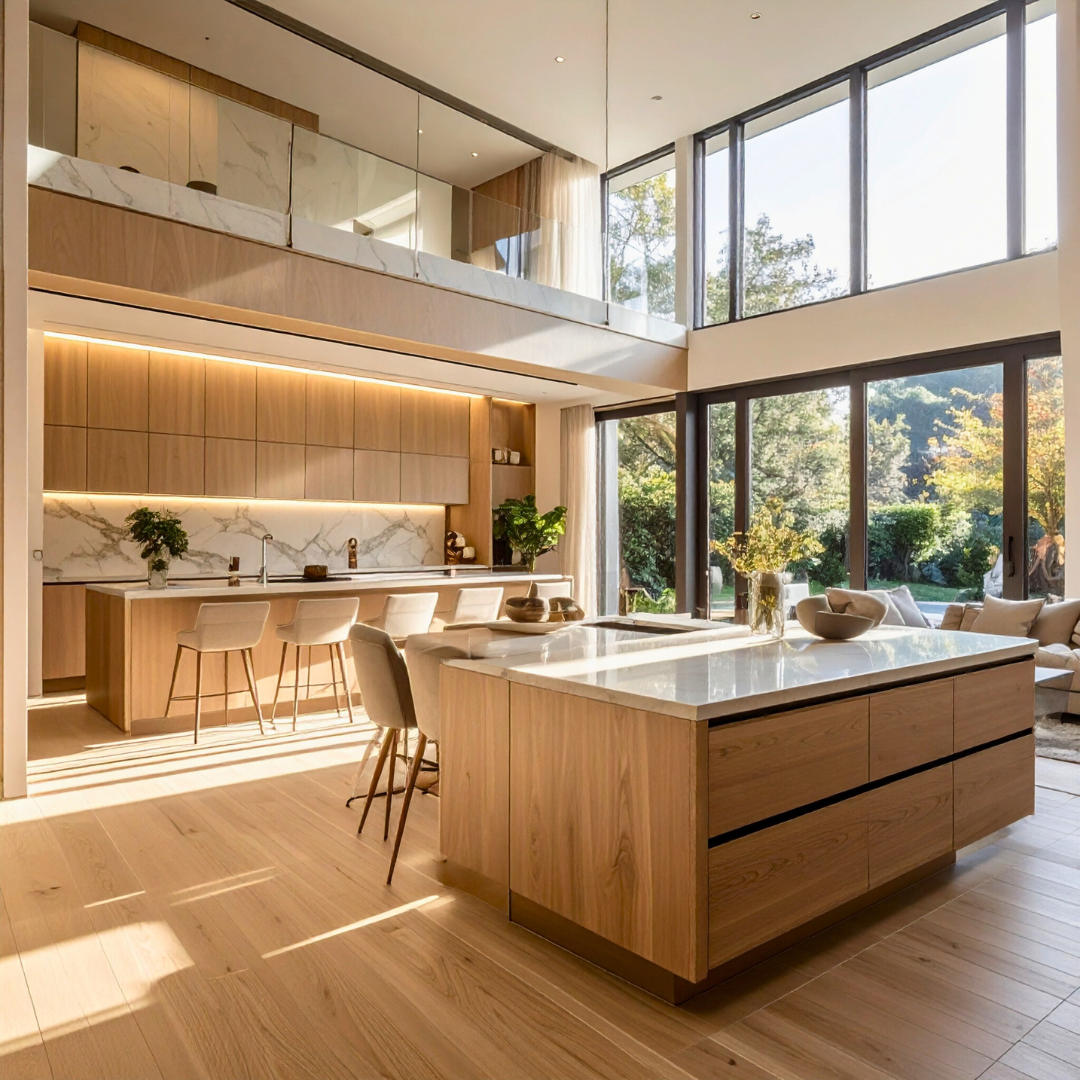
Every home carries a soul — an invisible resonance that whispers of its occupants’ stories, memories, and desires. At Blucap Interiors, we design not merely to impress the eye but to engage the senses and sentiments.
This philosophy guides how we select materials and orchestrate atmospheres. The mellow grain of teak that radiates warmth, the soft tactility of linen curtains that filter sunlight into gentle hues, the contemplative silence of a perfectly proportioned alcove — each element is chosen to evoke feeling, not just form.
We often describe our work as emotional architecture — where design becomes an act of empathy. A home, after all, should not just look like you; it should feel like you.
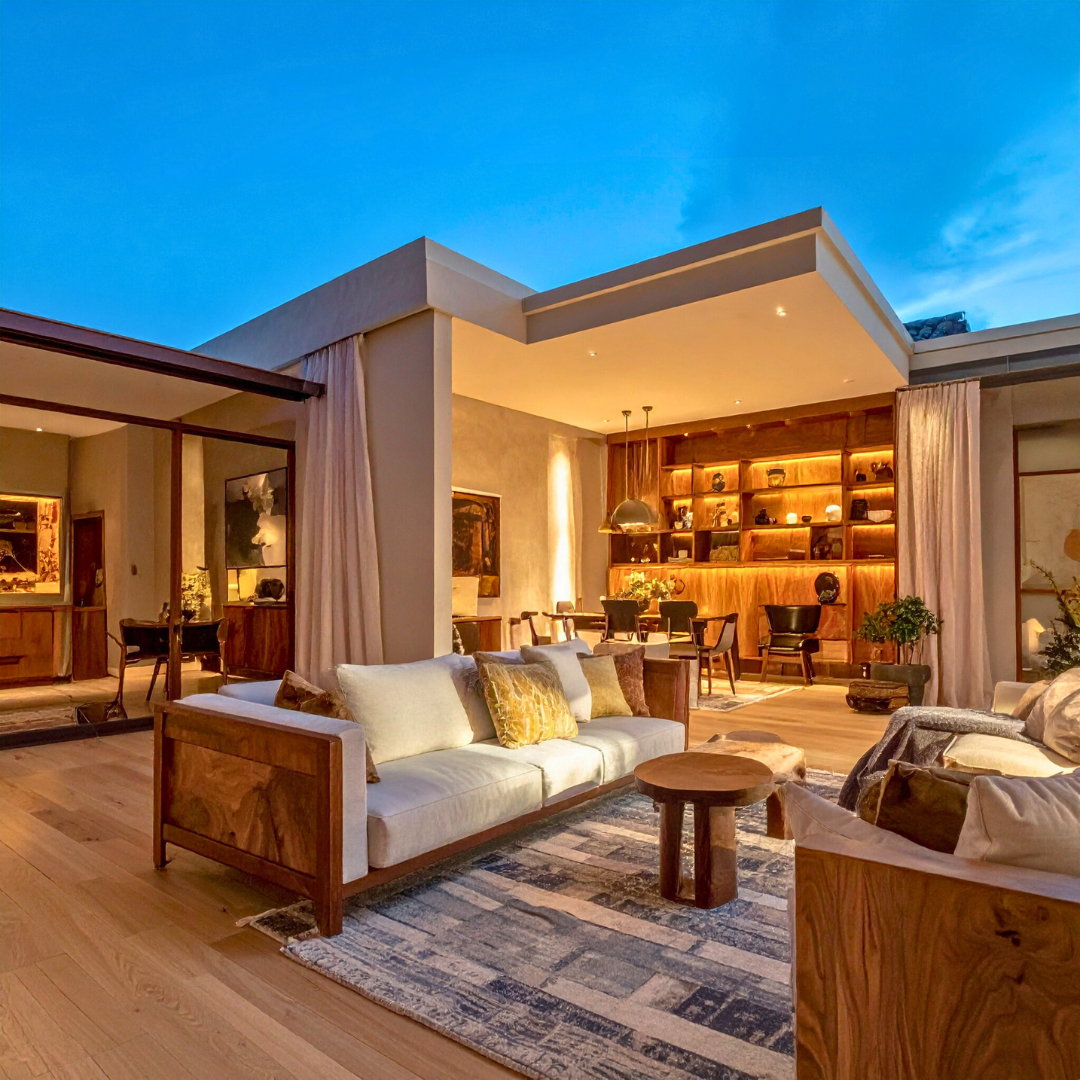
At Blucap Interiors, we find poetry in the unpolished, grace in the lived-in. Real homes are kinetic; they breathe, shift, and bear the gentle patina of life unfolding.
The world’s obsession with staged perfection overlooks the profound beauty of authenticity — the sunlight that pools unevenly on a rug, the soft creases on a beloved armchair, the faint aroma of morning coffee that lingers in the air. These are the textures of living, and no amount of styling can replicate their quiet magic.
When we design, we anticipate this evolution. We choose materials that age with dignity — leather that mellows, brass that deepens, wood that acquires character. We choreograph spaces that welcome spontaneity, that hold both order and freedom.
Because the most memorable homes are not preserved; they are inhabited.
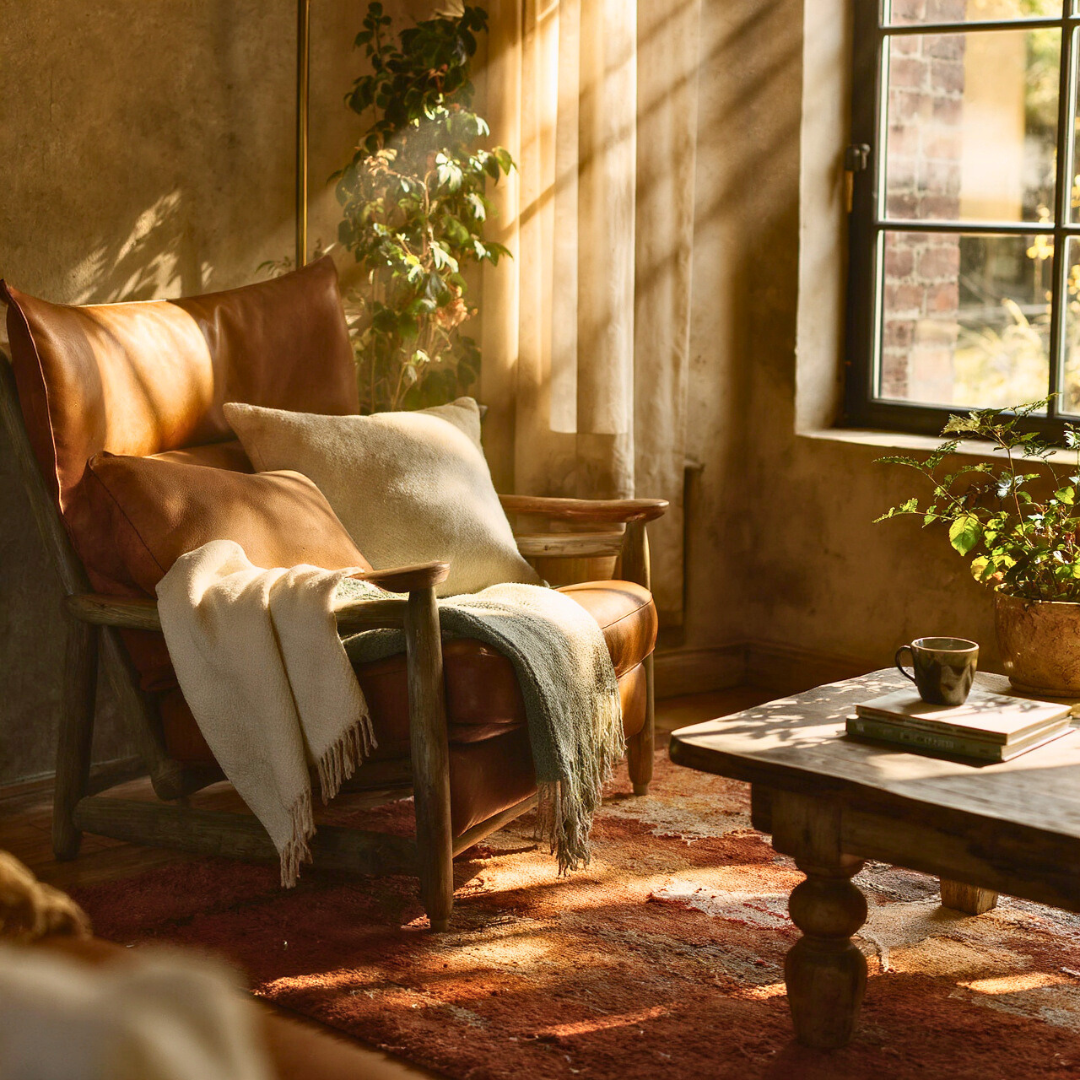
Design trends may capture attention, but they rarely capture hearts. At Blucap Interiors, we design for continuity — for spaces that will still feel compelling long after trends have faded into obscurity.
Timelessness, to us, is not about resisting change; it’s about creating design that evolves gracefully. A restrained architectural language, a palette rooted in nature, craftsmanship that reveals itself upon closer inspection — these form the essence of longevity.
Our approach weaves together modern clarity with artisanal warmth. We love juxtaposing the precision of contemporary forms with the soul of handcrafted details — because design that endures must speak both of today and tomorrow.
A truly lasting home doesn’t chase fashion; it cultivates familiarity. It becomes richer, more resonant, and more reflective of its inhabitants with each passing year.

The designer’s task, in its purest sense, is not to dictate taste but to decode identity. At Blucap Interiors, we consider design a form of translation — converting intangible emotions, habits, and aspirations into tangible form.
Our process begins with observation, not instruction. We watch how a client moves through their day, where they pause, what they treasure, how they unwind. These micro-moments become design cues — guiding everything from spatial flow to texture palette.
Design, when done right, becomes invisible. It orchestrates harmony without drawing attention to itself. The most successful spaces are the ones that feel inevitable — as if they had always existed, quietly waiting to be discovered.

Designing for real life requires restraint, empathy, and courage — the restraint to avoid excess, the empathy to understand people deeply, and the courage to prioritize meaning over mere aesthetics.
At Blucap Interiors, we strive to create homes that breathe — spaces that embody lived beauty, not staged perfection. Because design, at its highest form, is not decoration; it is devotion — to comfort, to craftsmanship, to the quiet poetry of everyday life.
In the end, the truest measure of design is not applause but belonging. And when a space finally feels like you, when it holds both your chaos and your calm — that’s when design transcends style and becomes life itself.


In educational environments, architecture and interior design are never just about walls and furniture. They are about shaping experiences, influencing behavior, and supporting the well-being of students. Classrooms, laboratories, and libraries often take the spotlight, but the washroom—used daily by every student and staff member—remains one of the most critical, yet most overlooked, elements of school infrastructure. At Blucap Interiors, we recognize the profound role these spaces play and approach the design and fit-out of school washrooms with the same rigor and sensitivity as we do for more celebrated areas of a campus.
A school washroom must work seamlessly. It should accommodate large numbers of students, withstand high usage, and function without constant repair. At Blucap Interiors, our design ethos begins with practicality—durable fixtures, water-efficient taps, non-slip flooring, and layouts that minimize bottlenecks. Every detail is considered to optimize flow, reduce waiting time, and ensure ease of use for children of all ages. Functionality here does not mean compromise; rather, it is about intelligent planning that enables a washroom to serve effectively for years.

Children’s health is deeply tied to the hygiene standards of their surroundings. Washrooms that are poorly ventilated or difficult to clean can quickly become breeding grounds for infection. At Blucap Interiors, our design language emphasizes cleanability and air quality—smooth, seamless surfaces, properly graded drainage, touchless fixtures, and well-placed ventilation systems that maintain freshness throughout the day. Safety is also carefully integrated into the design: from slip-resistant materials to rounded corners and adequate lighting, every choice contributes to a washroom environment that is both secure and reassuring.
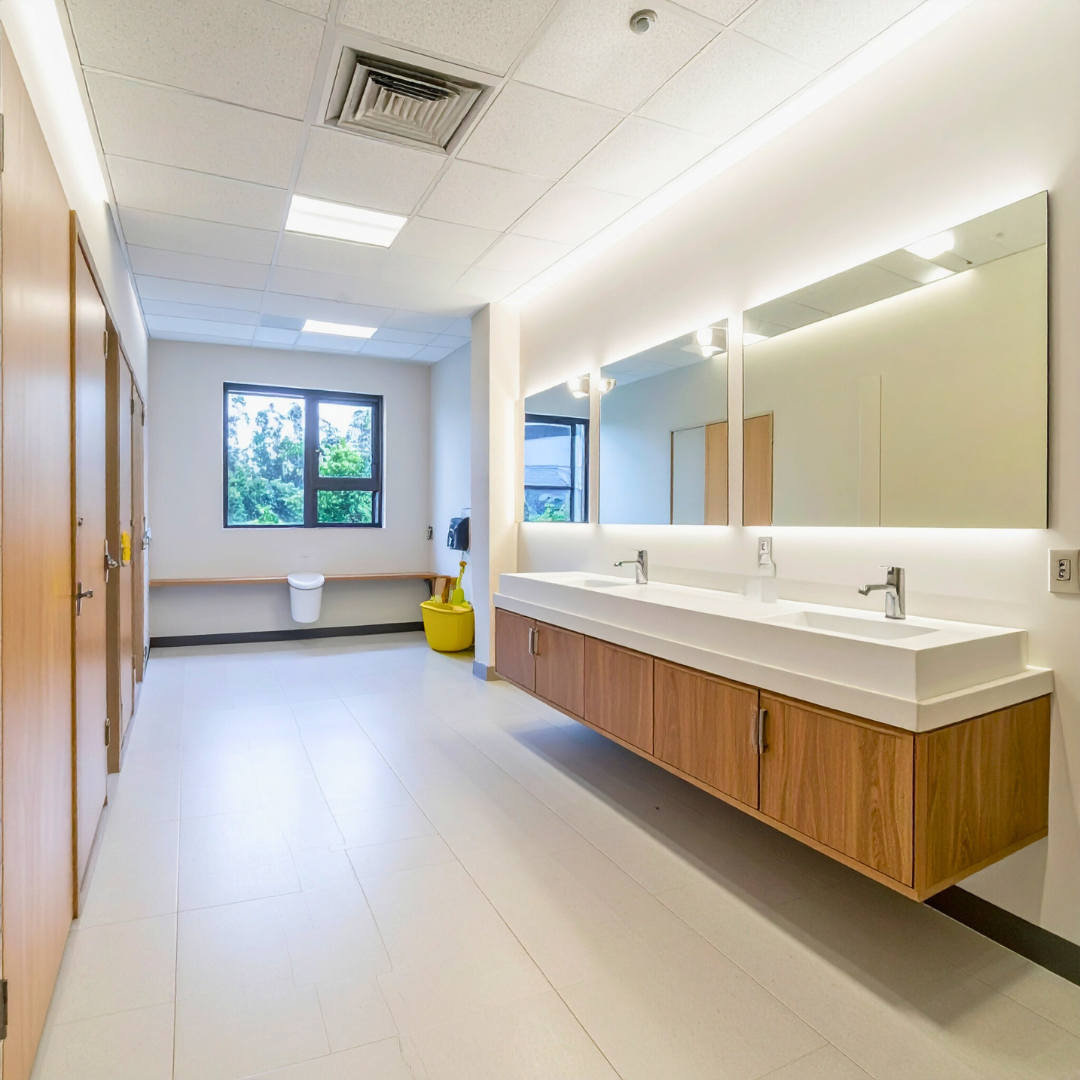
Modern schools must embody inclusivity, not only in curriculum but also in infrastructure. Blucap Interiors ensures that school washrooms address accessibility for students of diverse needs—whether through wider cubicles, grab bars, or lower basins designed for younger children. These interventions extend beyond meeting regulatory requirements. They reflect a philosophy of care: a recognition that every child deserves dignity, independence, and ease in even the most everyday of experiences.
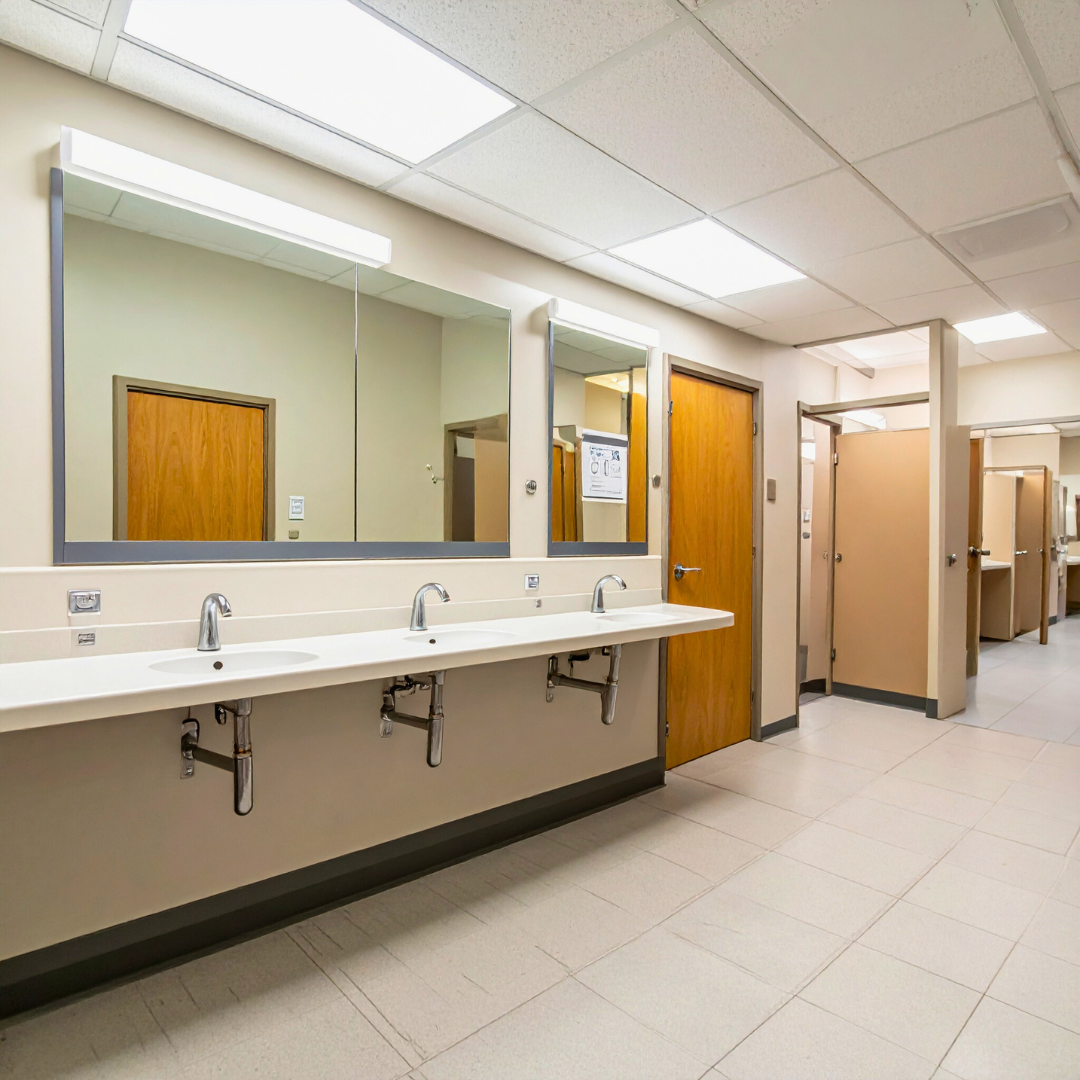
Washrooms in schools should not be indulgent, but nor should they feel neglected. The aesthetics of these spaces communicate volumes to students—about hygiene, order, and the value placed on their comfort. At Blucap Interiors, we design washrooms with a palette that is clean and neutral, often enhanced with subtle color cues that aid orientation. Adequate natural and artificial lighting ensures spaces feel open and safe, while uncluttered layouts foster calm and efficiency. It is in these details that washrooms evolve from being purely functional to becoming quietly supportive environments.
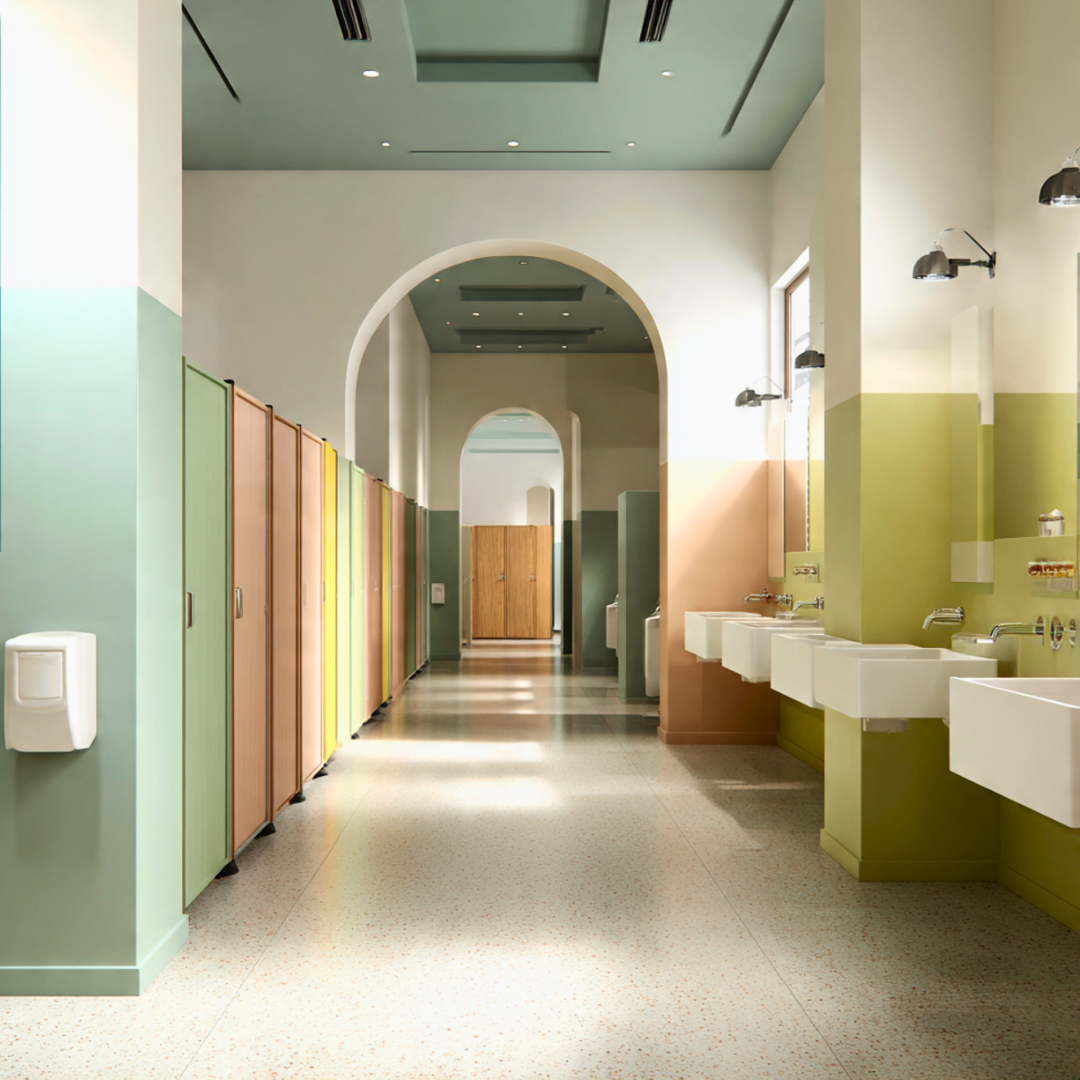
As schools are incubators for future citizens, their infrastructure must embody responsibility. Blucap Interiors integrates sustainability into washroom design by selecting eco-friendly finishes, specifying water-saving fixtures, and exploring sensor-based technologies that reduce consumption. Beyond cost efficiency, these solutions instill in students a lived awareness of sustainability—making environmental consciousness part of their daily routines.
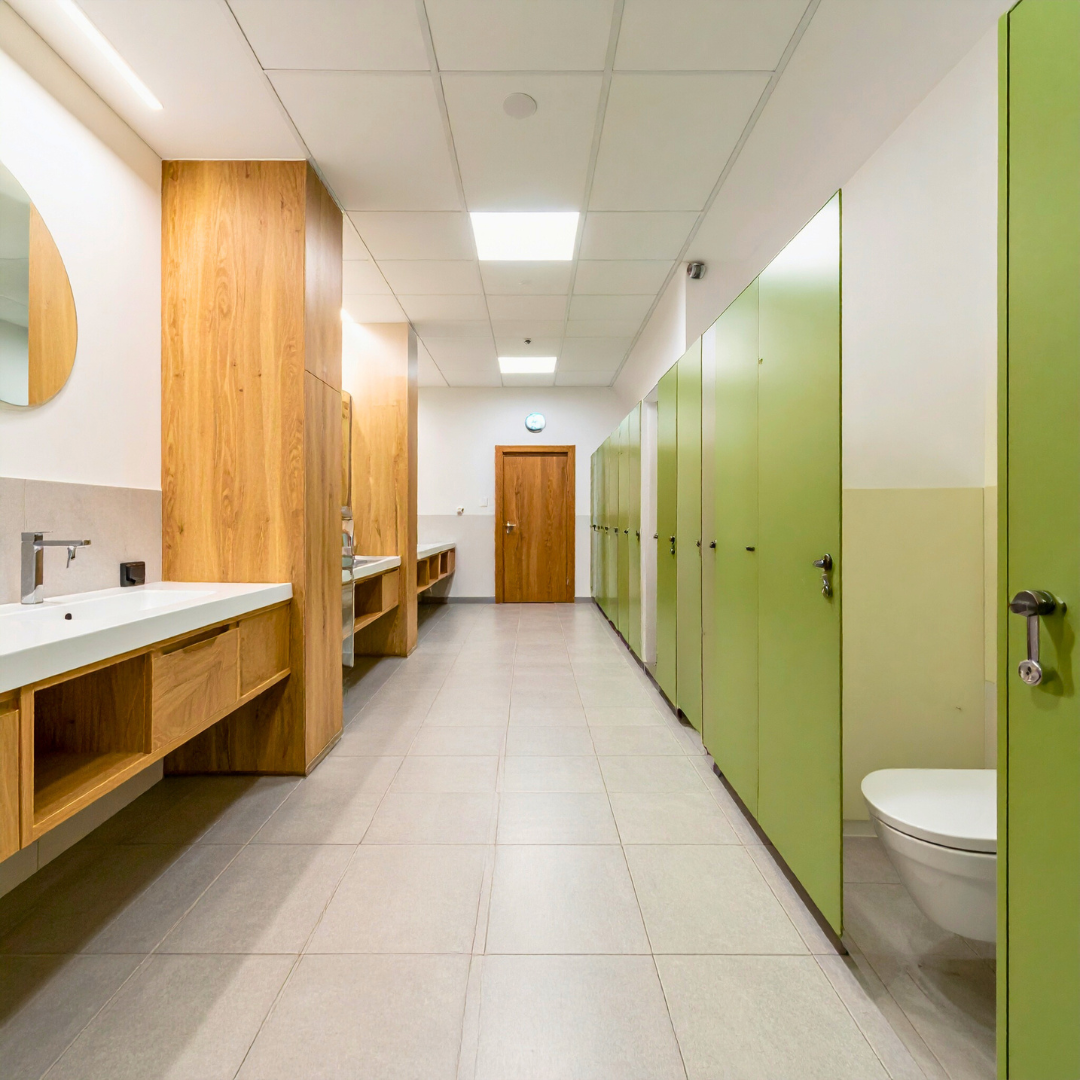
Washrooms cannot be designed in isolation. They are part of a larger ecosystem of spaces that together define the identity of a school. At Blucap Interiors, we view them as integral nodes within the broader learning environment—linked not just by circulation paths but by the same values of safety, inclusivity, and sustainability that guide classroom and common area design. This holistic approach ensures that no space, however utilitarian, is left behind in the pursuit of educational excellence.
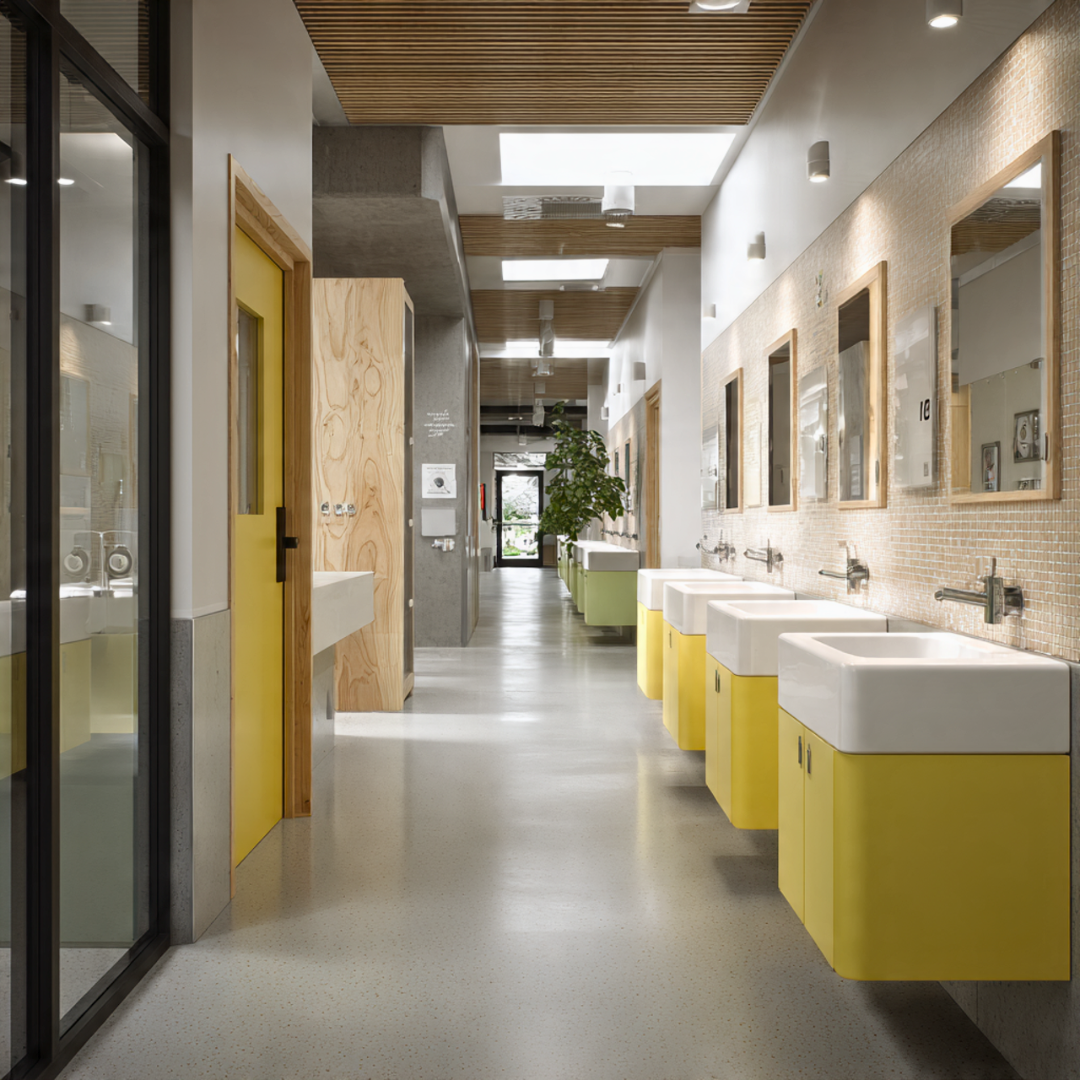
The design of school washrooms is an exercise in balancing practicality with dignity, hygiene with aesthetics, and durability with sustainability. At Blucap Interiors, we see these spaces not as afterthoughts but as vital elements that directly impact the well-being of students and the efficiency of institutions. By applying thoughtful design, high-quality fit-out solutions, and a philosophy of care, we transform school washrooms into environments that quietly but powerfully support learning.

In today’s fiercely competitive real estate landscape, the mock-up apartment is no longer just a marketing add-on—it has become a powerful narrative tool. Developers now recognize that buyers do not purchase brick and mortar alone; they invest in a vision of life. A mock-up apartment is where that vision begins to take shape. It is the place where a family imagines lazy Sunday mornings, dinner parties with friends, and quiet nights of comfort. At Blucap Interiors, we see this not merely as interior design but as an act of storytelling—one where the narrative must feel aspirational yet attainable.
A successful mock-up apartment must ignite desire, but never feel intimidating. Overly stylized or ostentatious spaces may impress in the moment, yet they rarely invite a buyer to connect emotionally. At Blucap Interiors, our design approach is centered on creating homes that whisper luxury rather than shout it. We layer textures, curate finishes, and choose furnishings with the precision of a stylist but the empathy of a homeowner. Imagine a sofa that invites you to sink in after a long day, or a cozy nook that feels like it was waiting for your morning cup of tea. These are not coincidences; they are deliberate design gestures. By striking this careful balance, Blucap Interiors ensures every visitor leaves not just admiring the apartment, but envisioning a life within it.

Design is a language, and like all languages, it carries subtleties that speak louder than words. Every piece of furniture, every accent wall, every carefully chosen accessory in a mock-up apartment communicates a message about how life might unfold there. At Blucap Interiors, we curate these messages with intention. A dining area staged for six does not simply show space—it hints at lively gatherings and togetherness. A balcony styled with greenery and comfortable seating doesn’t just add charm—it suggests morning meditations and quiet escapes. We design mock-up apartments as narratives of lifestyle, ensuring that when potential buyers walk through, they are not only seeing square footage—they are experiencing a story of how they could live.
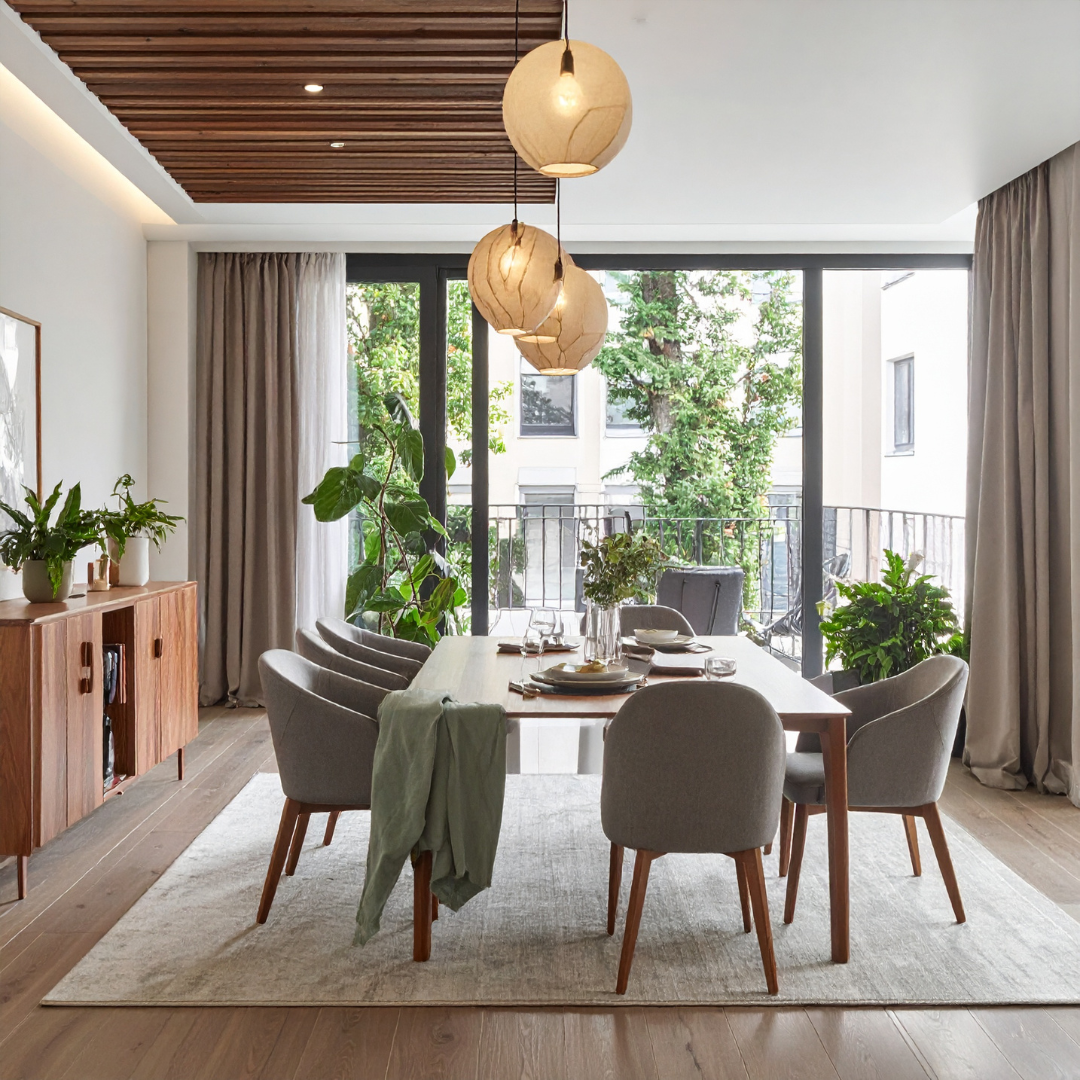
Perhaps the greatest challenge in designing a mock-up apartment is navigating the line between the extraordinary and the achievable. A home must inspire, but it must also feel within reach. If the interiors appear too extravagant, buyers dismiss them as unattainable; if they are too ordinary, buyers lose interest. This is where Blucap Interiors excels. Our design ethos is rooted in the belief that aspiration must be grounded in relatability. We bring in bespoke craftsmanship, layered textiles, curated art, and fine detailing, but we temper this with an understanding of what feels natural, livable, and welcoming. The result is a space that feels elevated, yet familiar—a blend of elegance and warmth that allows the buyer to say with confidence: “This is the life I want, and it feels possible.”
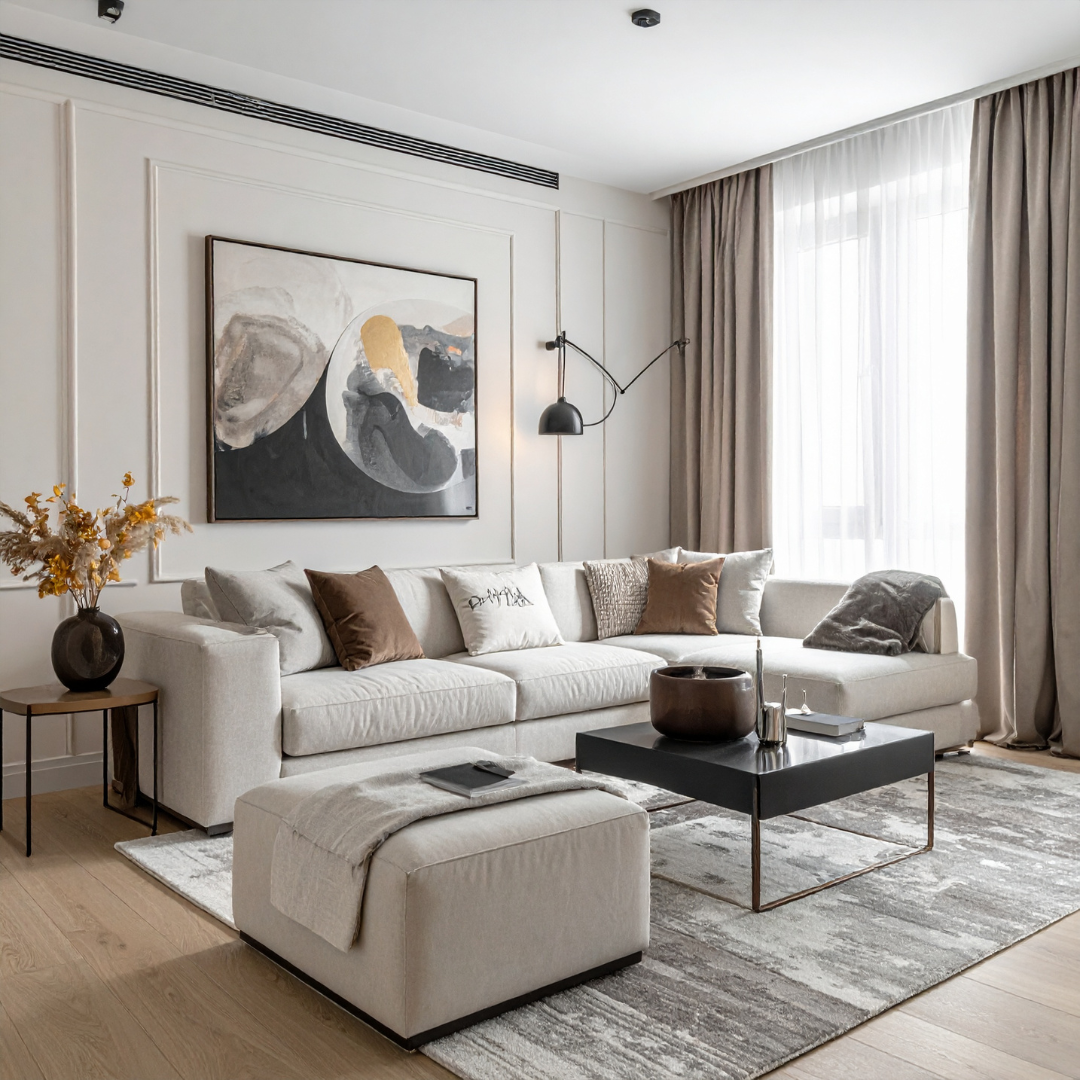
For developers, a mock-up apartment is not merely a display—it is an unspoken sales agent, working silently yet powerfully to drive conversions. A thoughtfully designed space by Blucap Interiors does more than impress; it builds trust. Buyers begin to see the quality of the project, the thoughtfulness of the developer, and the potential of their future home. Our mock-ups are crafted with an awareness of the developer’s vision, the target demographic, and the unique ethos of the project itself. By aligning design sensibilities with the aspirations of buyers, Blucap Interiors turns a static model apartment into a dynamic sales advantage—one that subtly persuades without ever needing words.

What truly sets Blucap Interiors apart in the world of mock-up apartment design is our commitment to personalization. We believe that no two projects should ever look the same, because no two audiences are the same. Every detail, from the selection of textures to the placement of accessories, is designed with the buyer in mind. Developers who partner with Blucap Interiors know they are not just receiving a generic showroom; they are receiving a bespoke lifestyle experience. This customization, guided by research and intuition, transforms a simple walkthrough into a moment of conviction—a point where curiosity becomes intent.
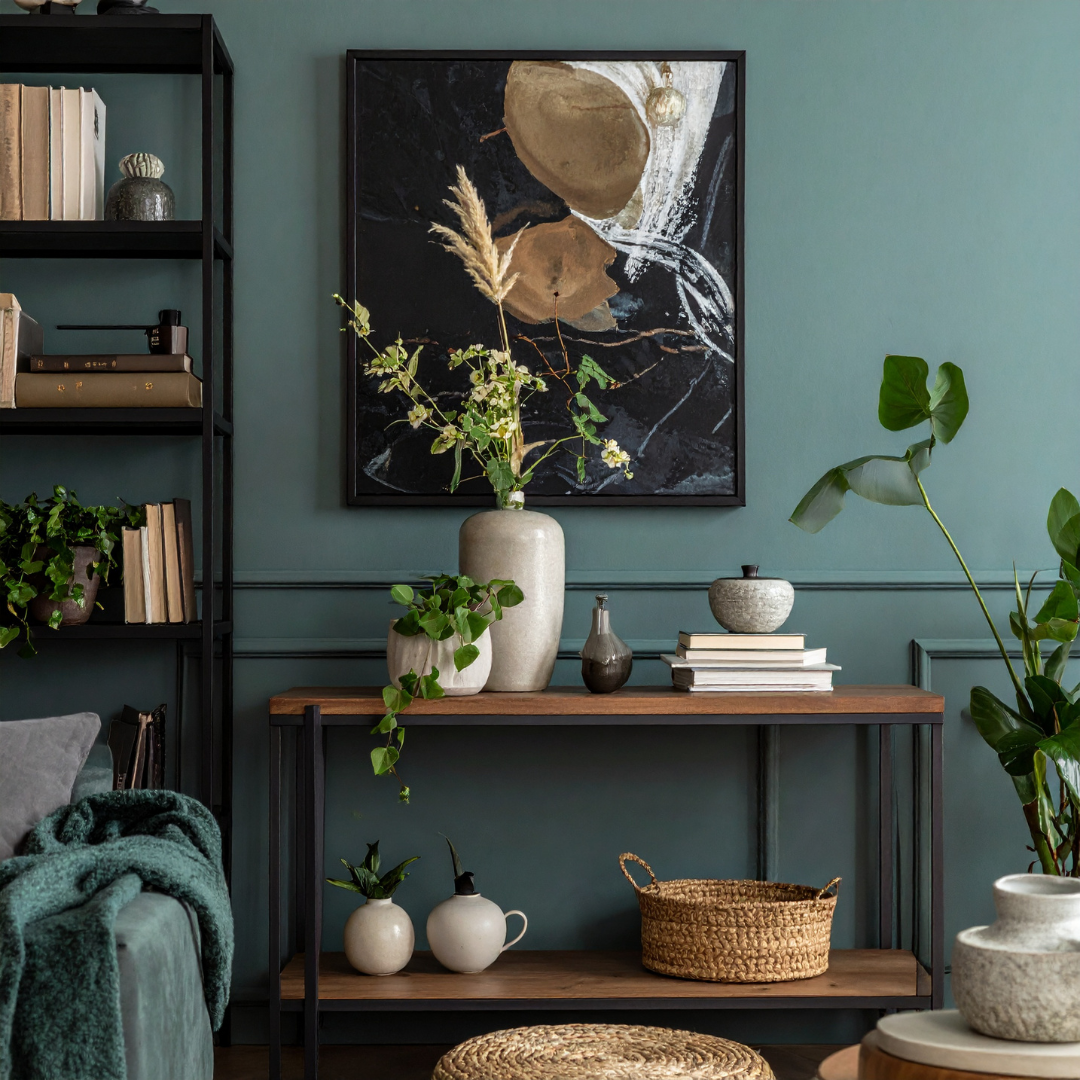
Luxury today is undergoing a subtle transformation. It is no longer defined by gold-trimmed finishes or extravagant displays. True luxury lies in ease, restraint, and refinement—qualities that endure long after first impressions fade. At Blucap Interiors, we embrace this philosophy wholeheartedly. Our mock-up apartments are designed to leave an imprint not through excess, but through detail: the softness of a throw, the quiet glow of layered lighting, the balance of proportions that simply feel right. This quiet luxury lingers in the mind of the buyer, making the experience not just memorable, but persuasive. It is this ability to combine aspiration with comfort that makes Blucap Interiors a name developers can trust.
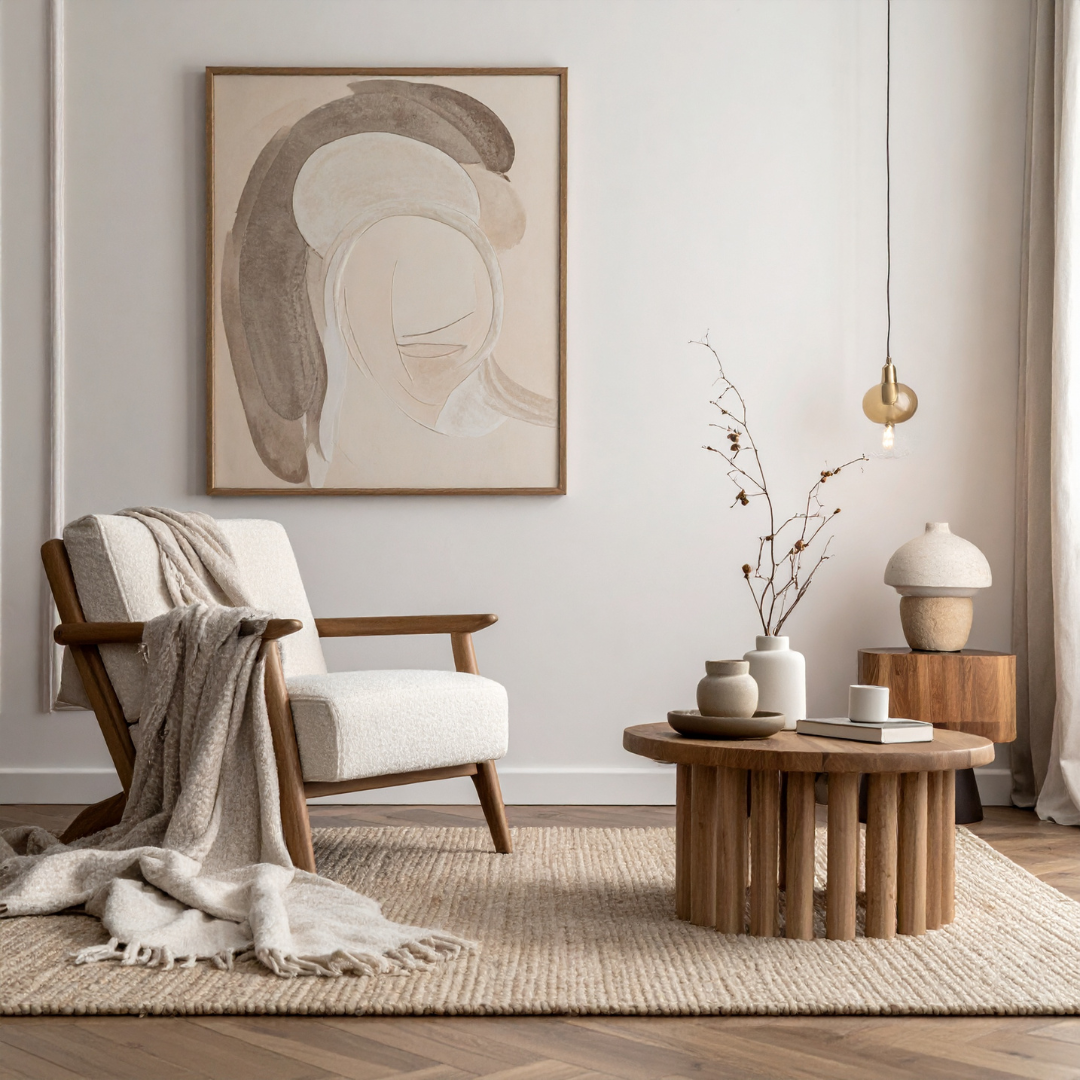
Mock-up apartments are far more than decorated shells—they are immersive experiences that inspire buyers to invest not in property, but in lifestyle. Their effectiveness depends on how convincingly they balance aspiration with attainability. At Blucap Interiors, we have refined this art into a signature practice. By marrying storytelling with design, restraint with elegance, and aspiration with warmth, we create mock-up apartments that do more than showcase space—they sell the dream of living.

In an era where residential communities are evolving into holistic lifestyle destinations, the clubhouse has emerged as the nucleus of shared experiences. More than just an amenity, it is the spatial embodiment of connection, leisure, and belonging. At Blucap Interiors, we believe that designing a clubhouse is not about assembling furniture and finishes; it is about choreographing moments—moments that turn neighbors into friends and communities into thriving ecosystems.
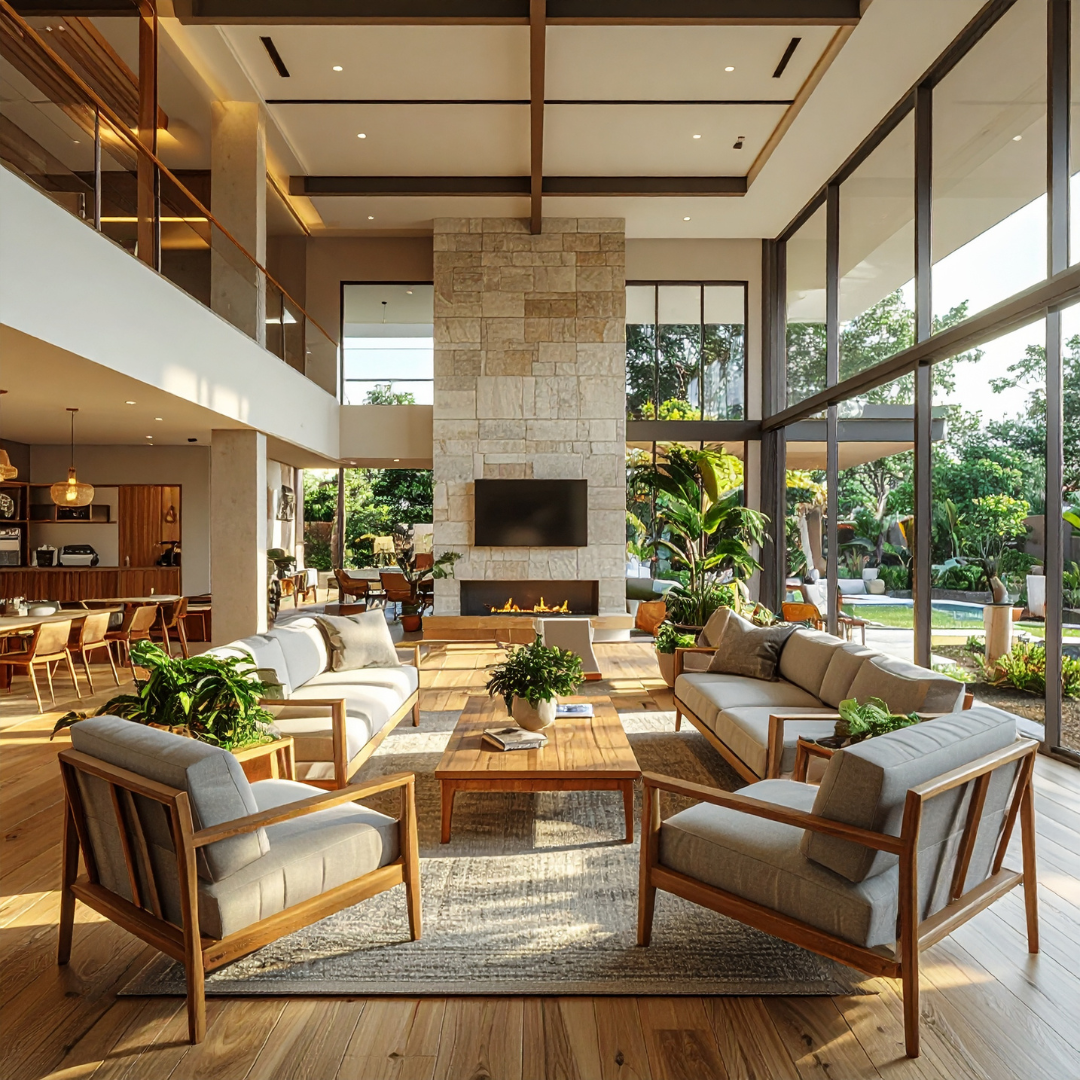
The architecture of togetherness begins with intent. Every clubhouse designed by Blucap Interiors is envisioned as a dynamic cultural hub—where curated aesthetics meet purposeful functionality. From expansive lounges that invite conversation to discreet reading nooks that promise solitude, each space is meticulously layered to encourage diverse patterns of interaction.

Materiality plays an equally pivotal role. At Blucap Interiors, we treat textures, finishes, and palettes not as mere adornments, but as emotional anchors. Natural stone, warm timber, and bespoke lighting solutions are orchestrated to cultivate an atmosphere of timeless elegance. These design choices do not simply appeal to the eye; they resonate with a collective sense of pride in the community’s shared space.
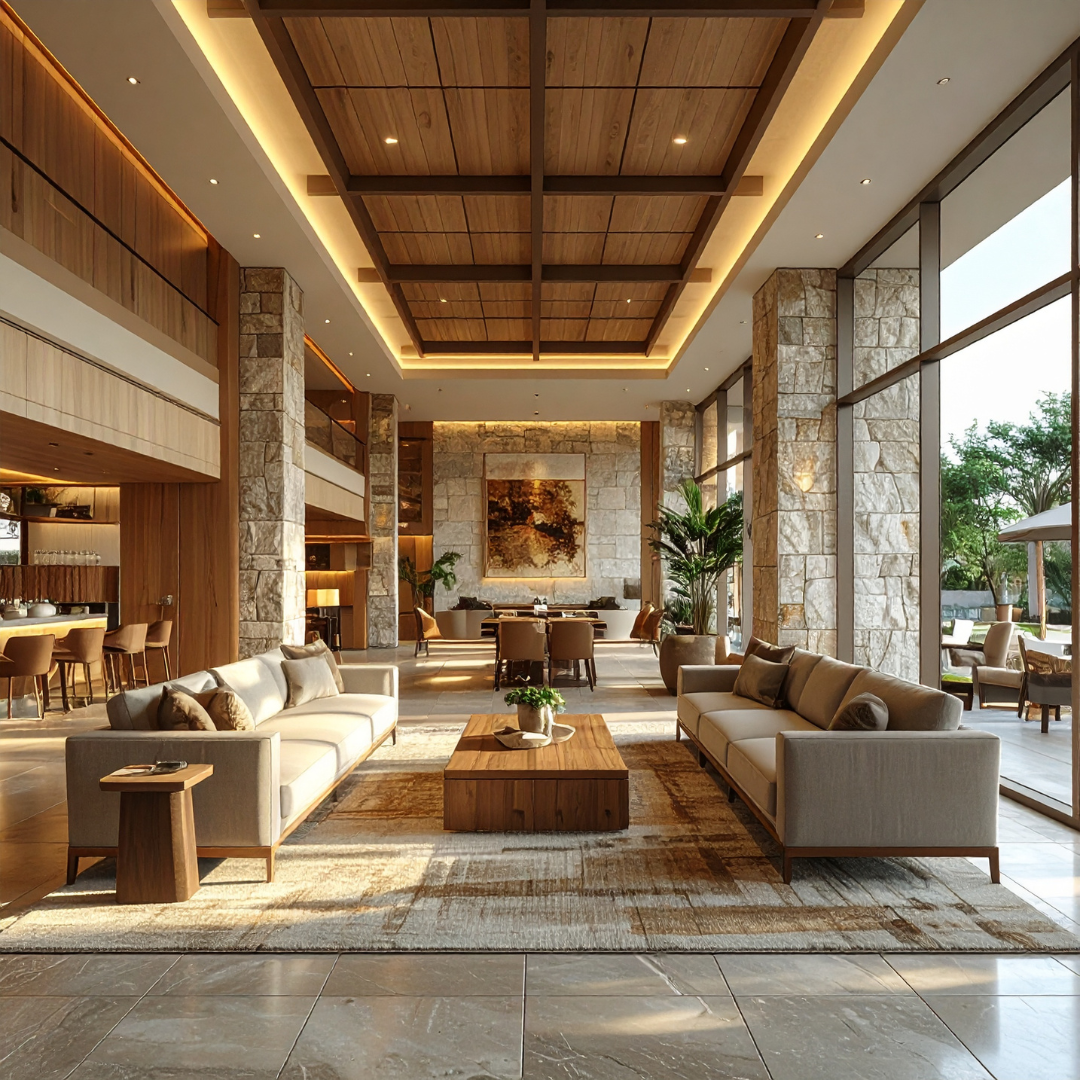
Functionality, however, remains at the heart of design. Recognizing that the contemporary clubhouse must serve multiple purposes, Blucap Interiors integrates adaptability into its spatial planning. A yoga studio seamlessly transforms into an event hall; a co-working lounge effortlessly shifts into a weekend café. Flexibility ensures that the clubhouse remains relevant, resonant, and resilient—capable of evolving alongside the lifestyles of its residents.
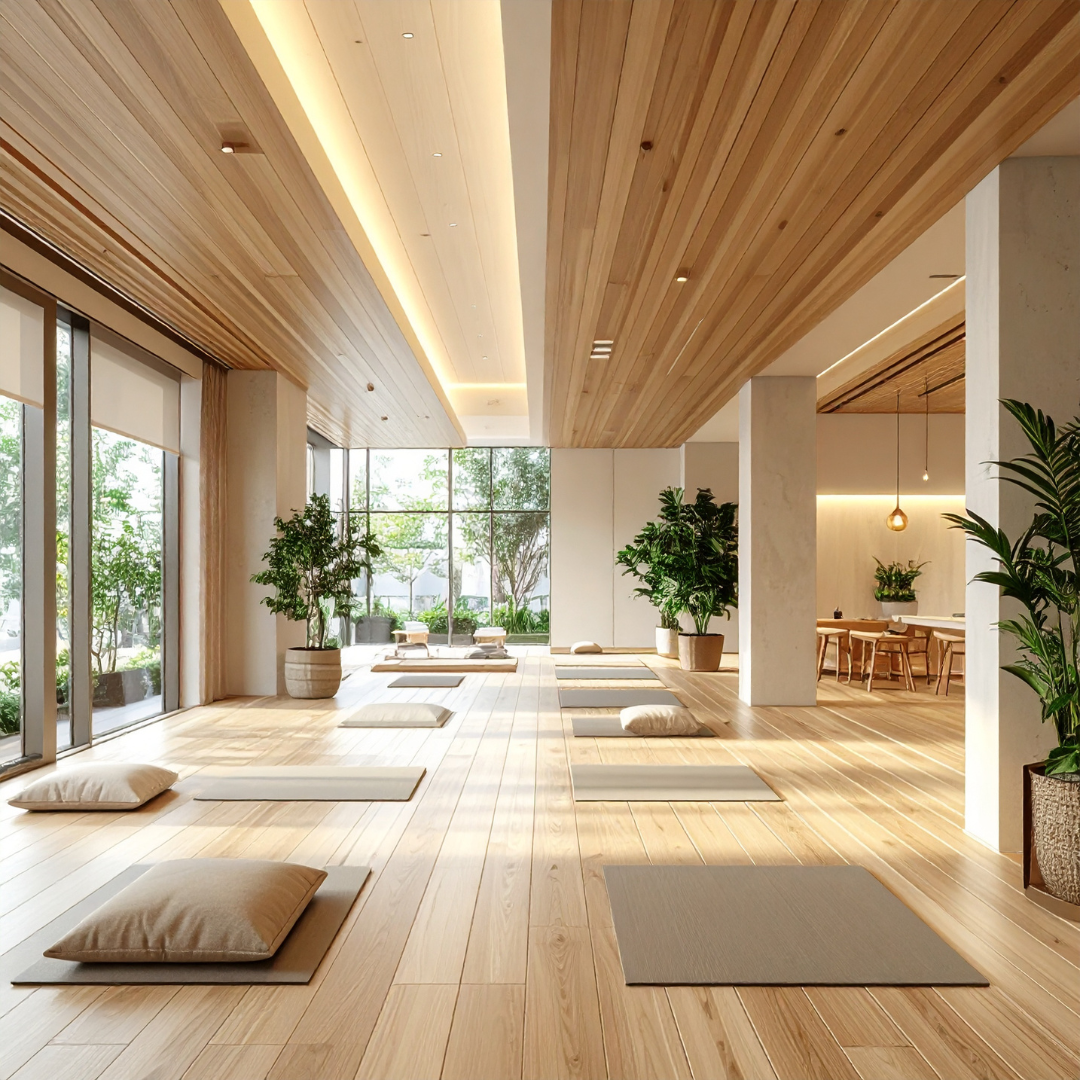
Equally important is the spatial flow that directs how people move, gather, and disperse. Blucap Interiors approaches circulation not as a technical exercise but as a narrative journey. Entryways are designed to make an impression without intimidation, corridors dissolve into inviting communal pockets, and transitions between zones are softened to promote fluid social interaction.

Ultimately, the measure of success lies not in the grandeur of chandeliers or the expanse of marble, but in the invisible bonds fostered within these walls. Clubhouses designed by Blucap Interiors transcend the conventional notion of amenities. They become vessels of shared identity, instilling a sense of belonging that elevates the everyday. In shaping these environments, Blucap Interiors demonstrates that thoughtful clubhouse interiors are more than just design—they are the architecture of the community itself.
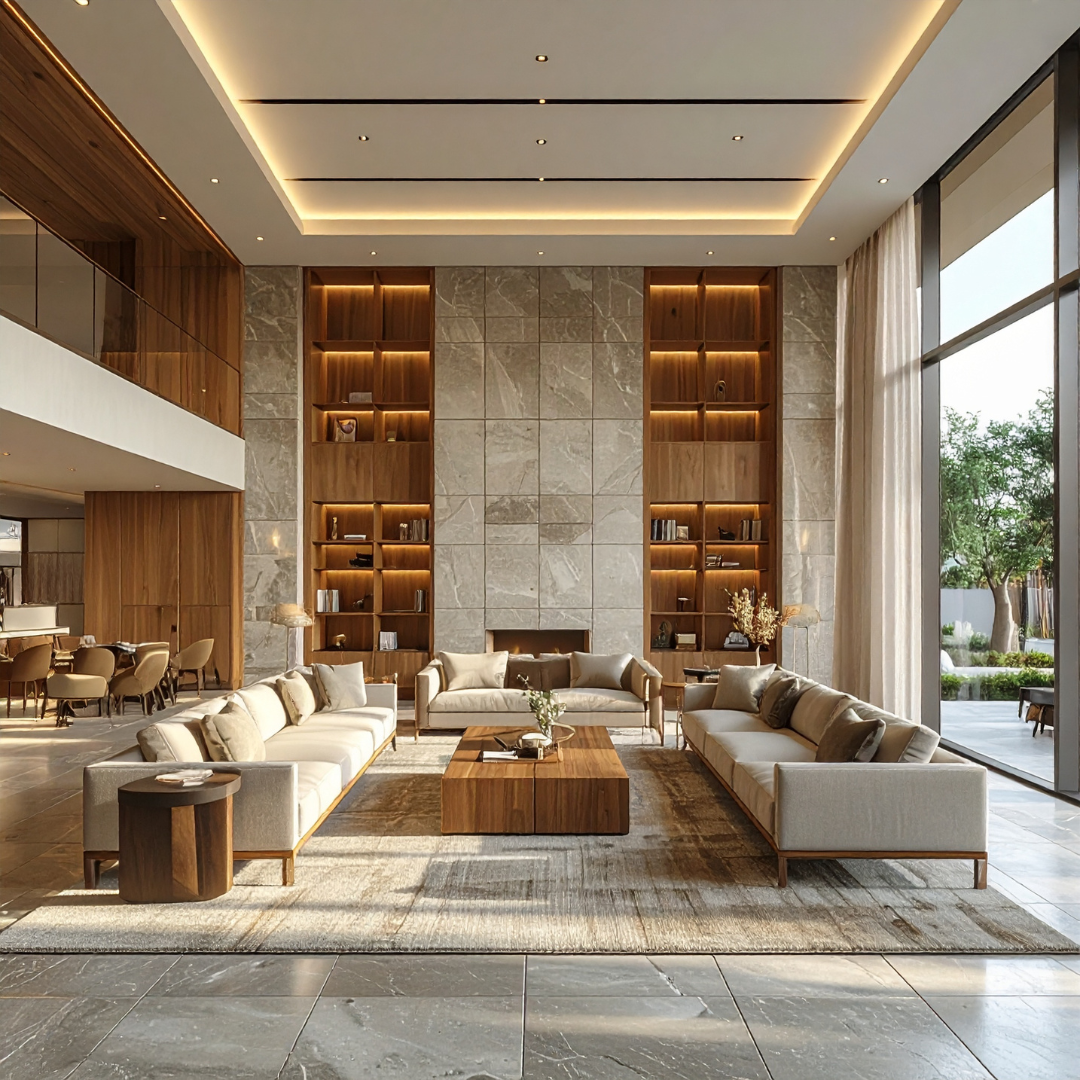

In today’s competitive landscape, design is no longer an afterthought—it is strategy in its most tangible form. A thoughtfully executed fit-out does more than create an aesthetically pleasing environment; it shapes behavior, influences perception, and drives measurable outcomes. At Blucap Interiors, we have witnessed how intelligent fit-out decisions yield powerful returns, whether in corporate offices, hospitality projects, or retail environments.

The modern workforce does not merely seek a job; it seeks an experience. The workplace environment plays a pivotal role in whether employees feel engaged, valued, and inspired. When Blucap Interiors approaches an office fit-out, we go beyond surface-level design to consider factors such as acoustics, spatial flow, ergonomic comfort, and biophilic integration.
These design choices are not cosmetic indulgences; they directly correlate with productivity and retention. An office that allows employees to collaborate without distraction, rejuvenate in thoughtfully designed breakout areas, and feel pride in their surroundings is one that nurtures loyalty. The cost of high attrition far outweighs the investment in a well-planned fit-out—an ROI equation that organizations are increasingly beginning to recognize.
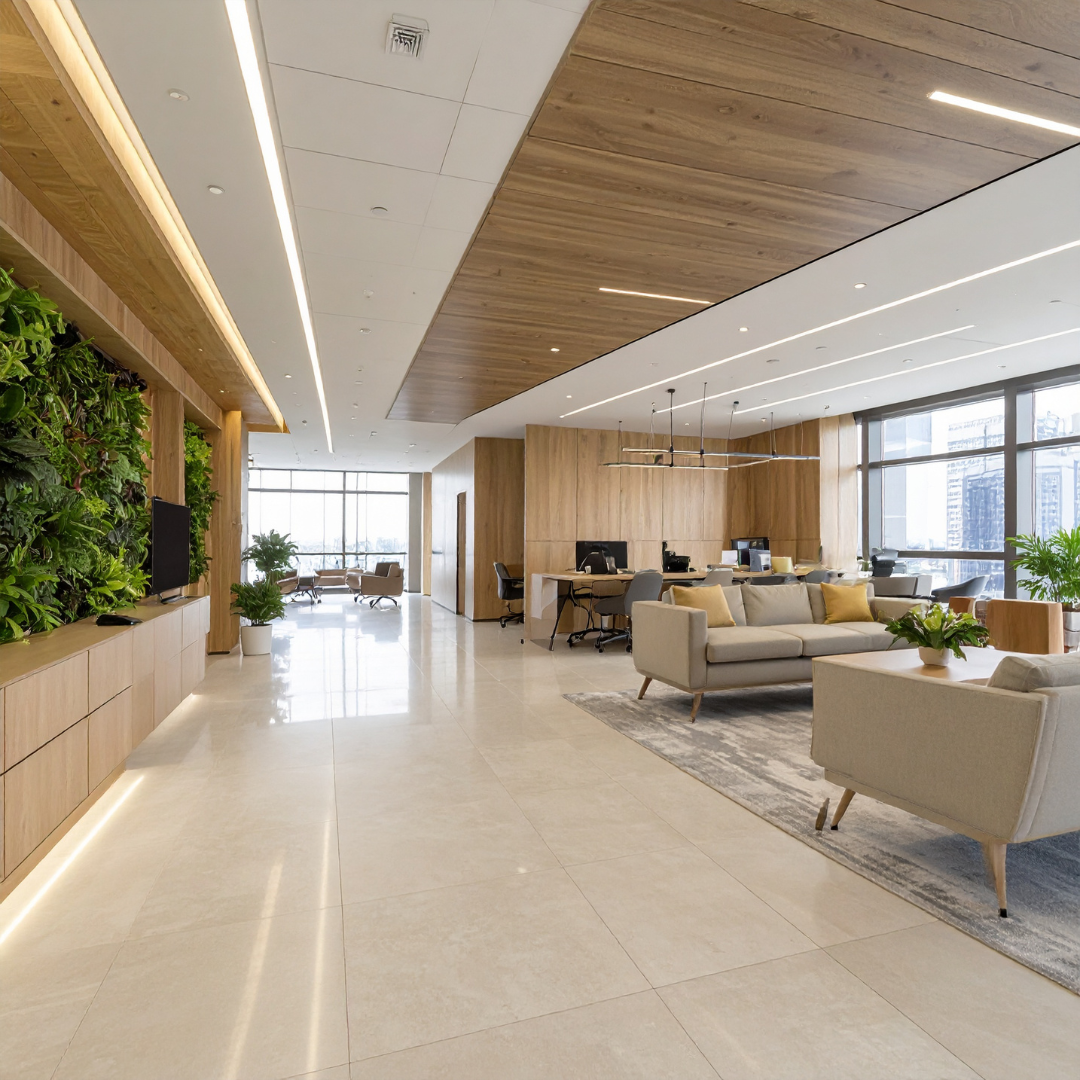
In hospitality, the guest experience is the ultimate metric. Reviews are no longer private opinions; they are public endorsements—or deterrents—that shape brand reputation. Blucap Interiors has seen firsthand how a meticulously designed reception area, intuitive wayfinding, or even subtle ambient lighting can elevate a guest’s perception of service long before they interact with staff.
Design details create emotional resonance. The warmth of textures, the comfort of spatial proportions, the seamless integration of local culture—these elements linger in memory and translate into glowing reviews. And in the hospitality sector, positive reviews are not simply compliments; they are revenue drivers. A thoughtful fit-out thus becomes a silent ambassador of brand identity.
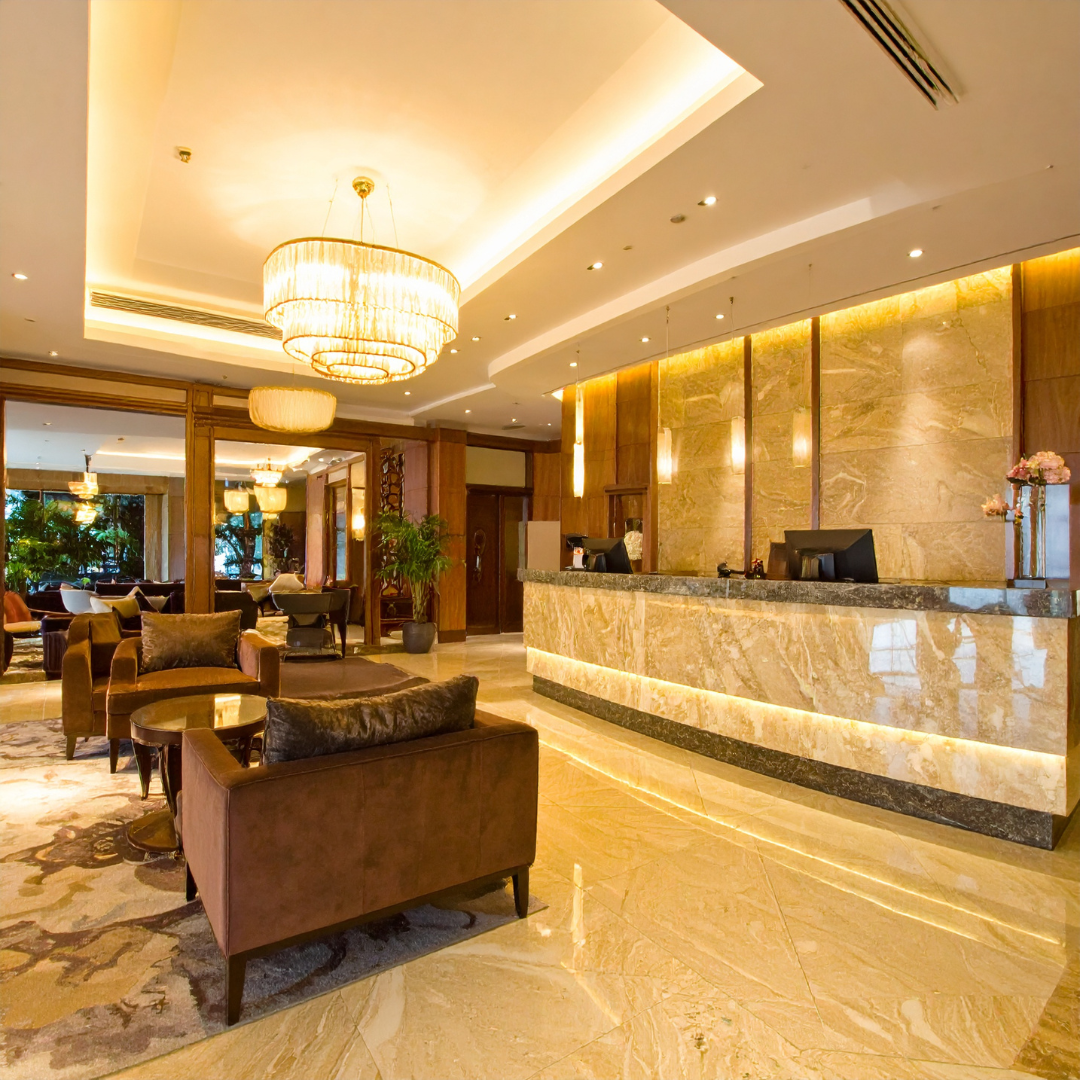
In retail, design has always been a silent salesperson. Layout, lighting, and circulation patterns dictate not only how long a customer lingers but also what they purchase. At Blucap Interiors, our approach to retail fit-outs blends psychology with design. Strategic lighting highlights high-value products, material palettes communicate brand ethos, and spatial planning encourages exploration while avoiding fatigue.
The ROI here is direct and immediate: increased sales, higher basket values, and stronger brand recall. In an age where online retail is relentless, the physical store must justify its existence by offering an experience that cannot be replicated virtually. This is where thoughtful fit-out design becomes the differentiator between surviving and thriving.
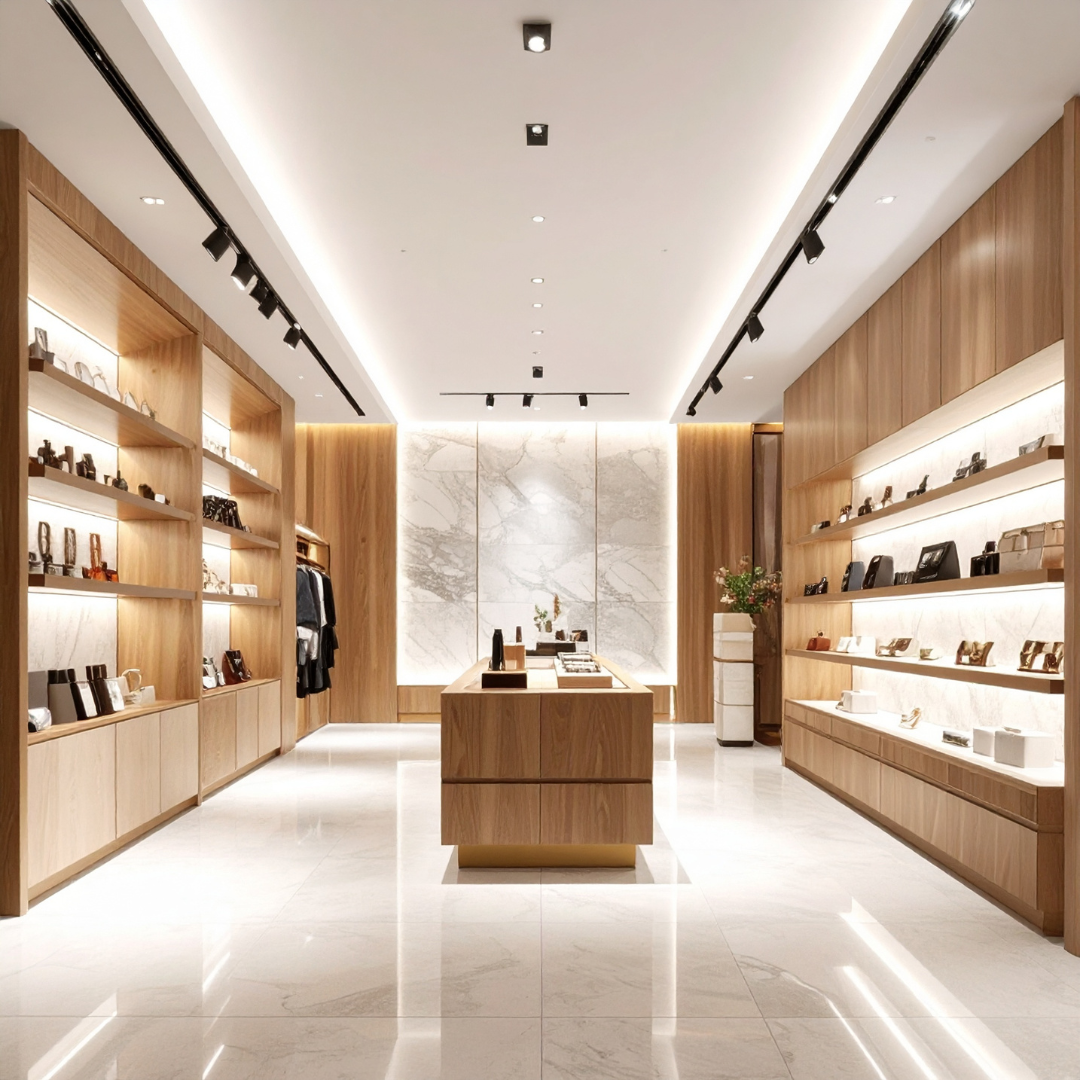
What unites corporate offices, hospitality spaces, and retail environments is a singular truth: design is no longer just about how a space looks—it is about what a space does. The return on a thoughtful fit-out is evident in the loyalty of employees, the satisfaction of guests, and the purchasing behavior of customers.
At Blucap Interiors, we believe that every square foot should work harder, delivering value far beyond its visual appeal. By marrying aesthetics with strategy, we ensure that fit-out design becomes an investment with compounding returns—financial, emotional, and reputational.
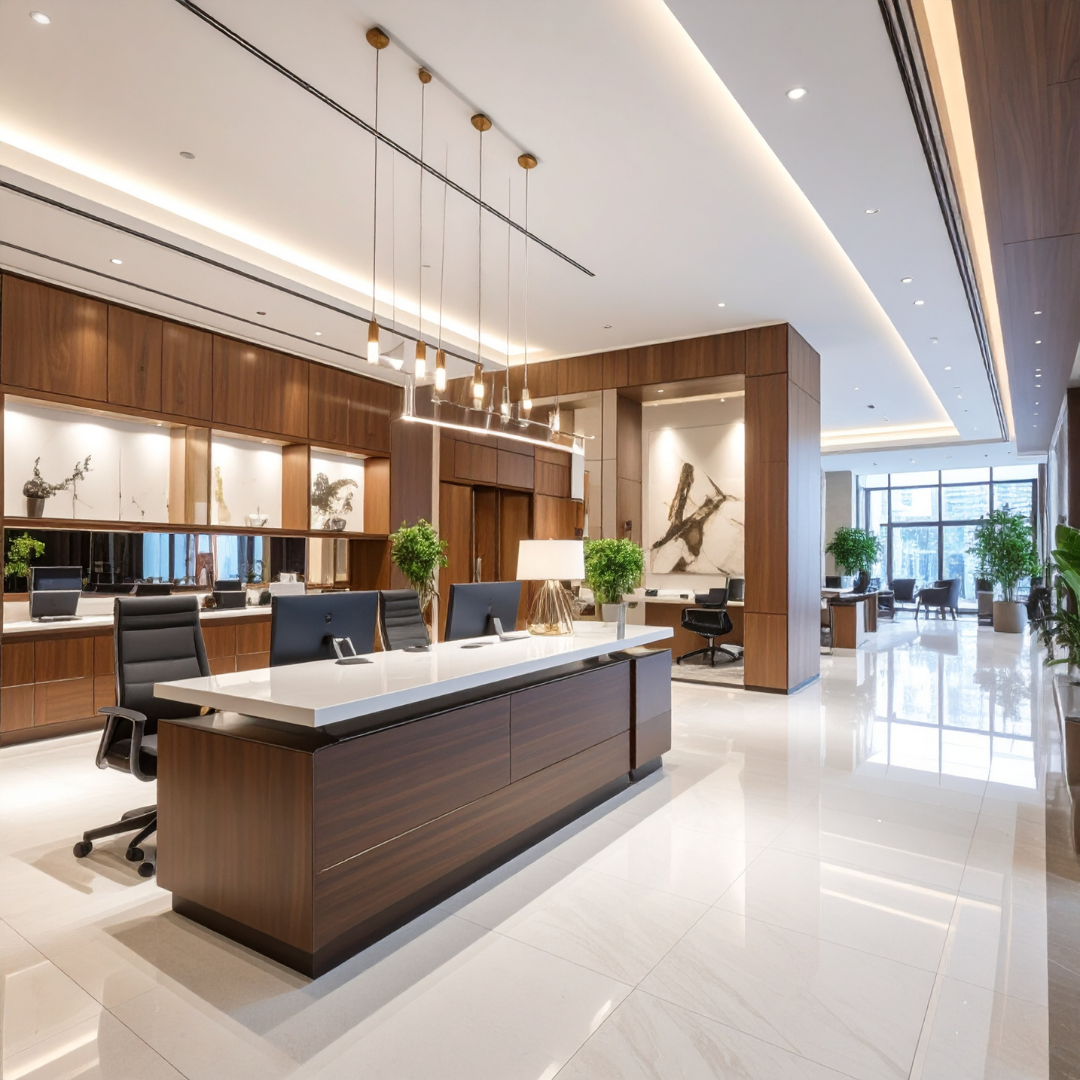

In the world of hospitality, guest experience has become the ultimate currency. For service apartments, where the line between temporary lodging and “home away from home” blurs, design plays a pivotal role in shaping how visitors perceive their stay. And in today’s digital-first world, these perceptions are immortalized in the form of online reviews. A five-star rating often begins long before the first “good morning” from the staff—it begins with the design.
At Blucap Interiors, we’ve seen first-hand how thoughtful interiors can transform an ordinary service apartment into a space that consistently wins glowing guest feedback. Design isn’t just about appearances; it’s about how a space makes someone feel, how it supports their lifestyle, and how it quietly influences the moments they choose to share online.
When a guest enters a service apartment, the initial visual impact defines their entire narrative of the stay. Neutral palettes, well-placed lighting, and uncluttered layouts create an instant sense of calm. This isn’t simply about beauty; it’s about trust. A guest who perceives the space as refined and well-maintained is already more inclined to leave a positive review.
Blucap Interiors specializes in crafting these first impressions through a harmonious blend of aesthetics and functionality. From curated art to intuitive spatial planning, every element is designed to tell a story of comfort and sophistication.

For the modern traveler, luxury is no longer defined by extravagance but by effortless comfort. Soft furnishings, ergonomic furniture, and acoustically balanced interiors create a cocoon of ease. A service apartment designed with this understanding allows guests to rest, work, and live seamlessly.
The team at Blucap Interiors approaches every service apartment project with an emphasis on “human-centric design.” Guests remember how a sofa felt after a long day, how natural light filtered through sheer curtains in the morning, or how easy it was to move between the living and work zones. These small yet profound experiences often translate into glowing mentions in reviews.
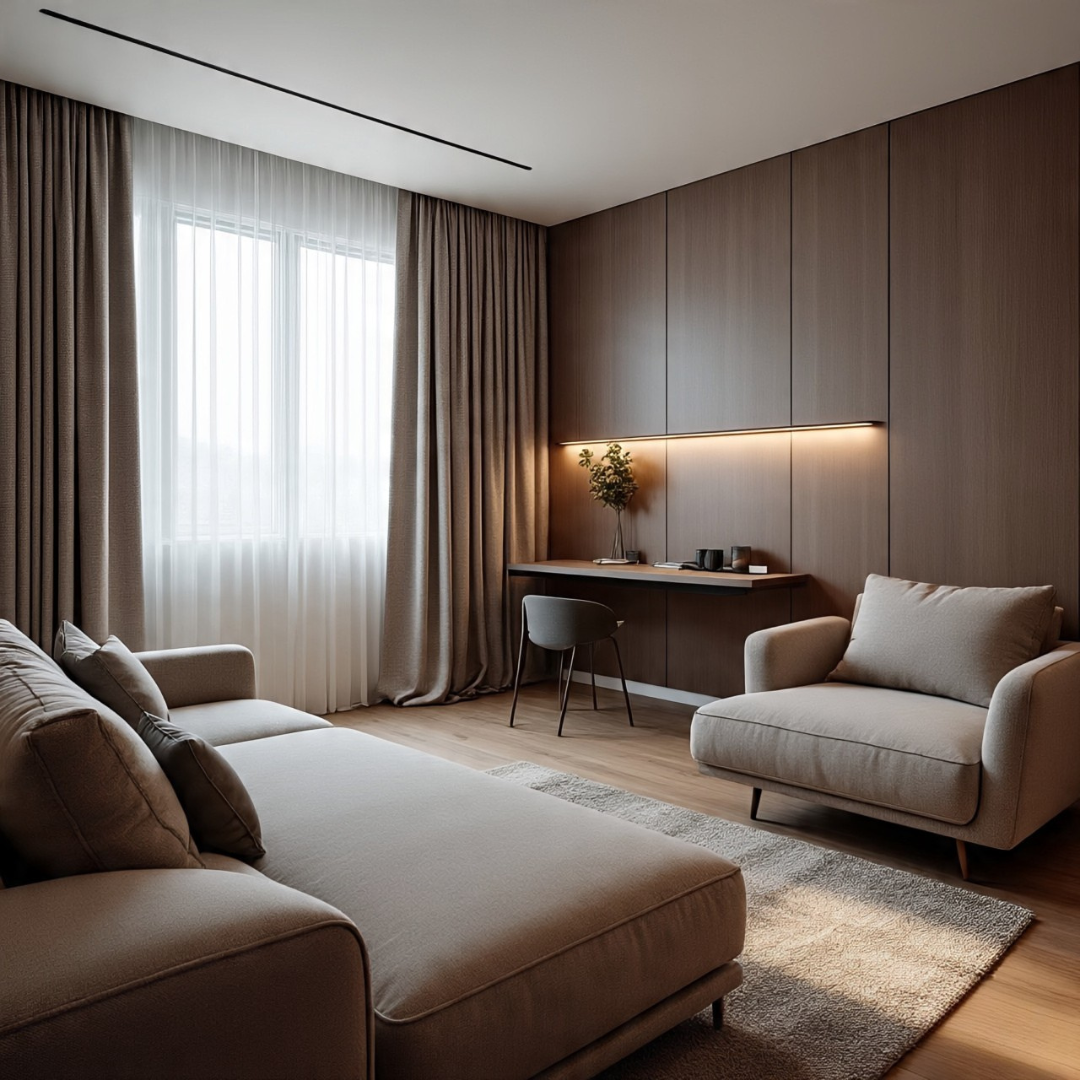
Guests may not always articulate why they enjoyed their stay, but design details have a way of surfacing in their feedback. A thoughtfully designed reading nook, art that reflects local culture, or even the texture of the flooring can leave lasting impressions. These are the “hidden touches” that elevate a review from a standard four stars to a sparkling five.
With Blucap Interiors, no detail is too small. From choosing sustainable materials to integrating ambient lighting that complements circadian rhythms, every choice is intentional. This meticulous attention to detail not only enhances guest comfort but also amplifies the aesthetic appeal that fuels positive ratings.
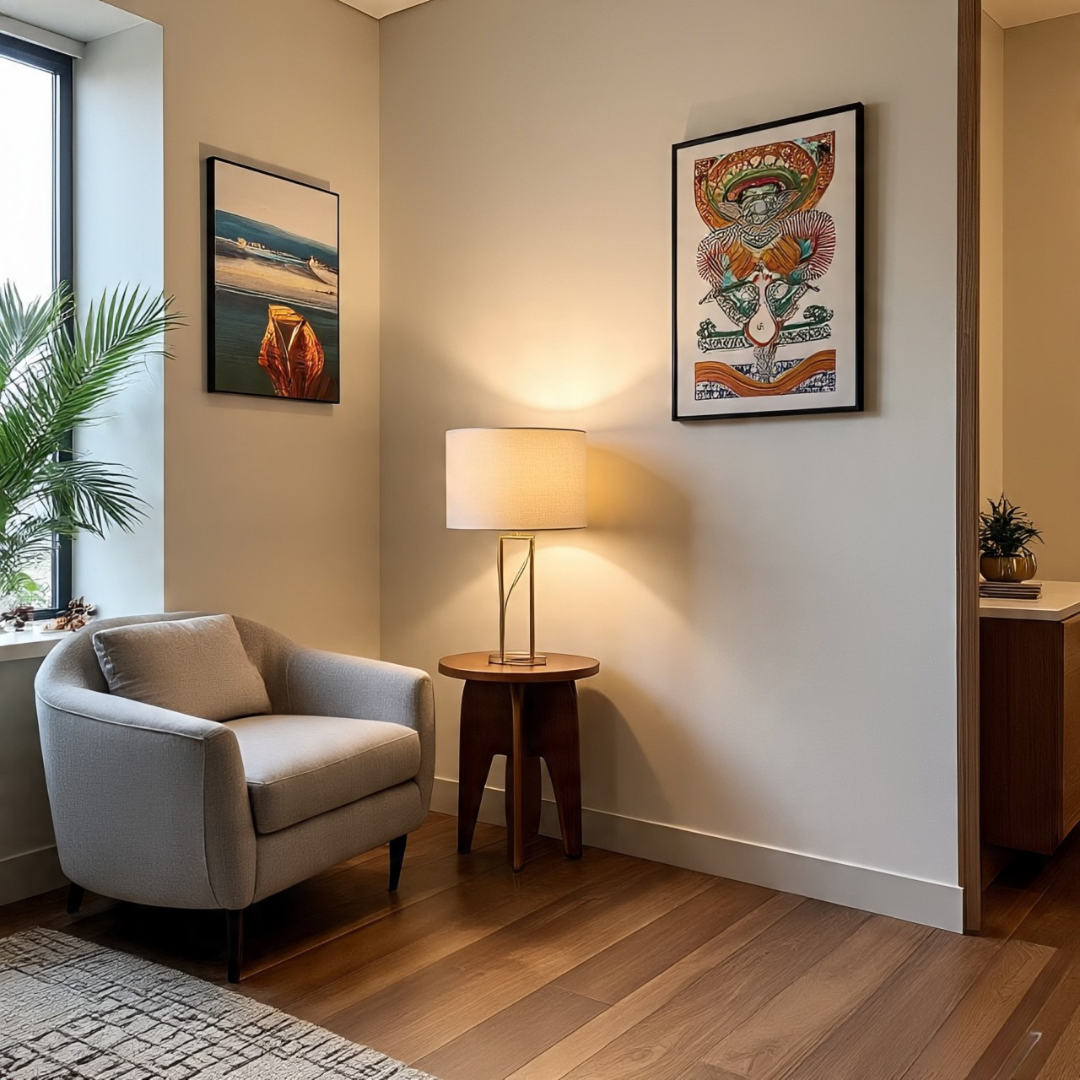
Today’s reviews are no longer confined to words on a travel website. Guests are also visual storytellers, sharing snapshots of their stay on Instagram and other platforms. A beautifully designed service apartment becomes its own marketing engine—every photo shared is a testimonial, every corner captured is free publicity.
Recognizing this shift, Blucap Interiors creates interiors that are as photogenic as they are functional. Balanced compositions, accent walls, and signature design features turn service apartments into Instagram-worthy backdrops. And when the apartment becomes part of a guest’s personal narrative online, positive reviews naturally follow.

Ultimately, interior design does more than influence star ratings—it builds trust. A well-designed service apartment communicates reliability, care, and a commitment to guest well-being. These intangible qualities resonate deeply with modern travelers, who value authenticity as much as comfort.
At Blucap Interiors, we believe that design is the silent host of every service apartment. It sets the mood, shapes the experience, and quietly nudges guests toward writing reviews that reflect delight, satisfaction, and loyalty. In the competitive landscape of urban hospitality, this link between aesthetics and ratings is not just powerful—it’s transformative.

Conclusion
In a world where online reviews dictate reputation and bookings, service apartments cannot afford to treat design as an afterthought. Every color palette, every texture, and every layout decision becomes a line in the story guests will tell. With thoughtful, guest-centered interiors, service apartments can consistently inspire reviews that are not only positive but glowing.
And in this ongoing dialogue between design and experience, Blucap Interiors remains at the forefront—crafting spaces where aesthetics are not just seen but deeply felt, and where design becomes the invisible hand guiding a guest’s five-star rating.
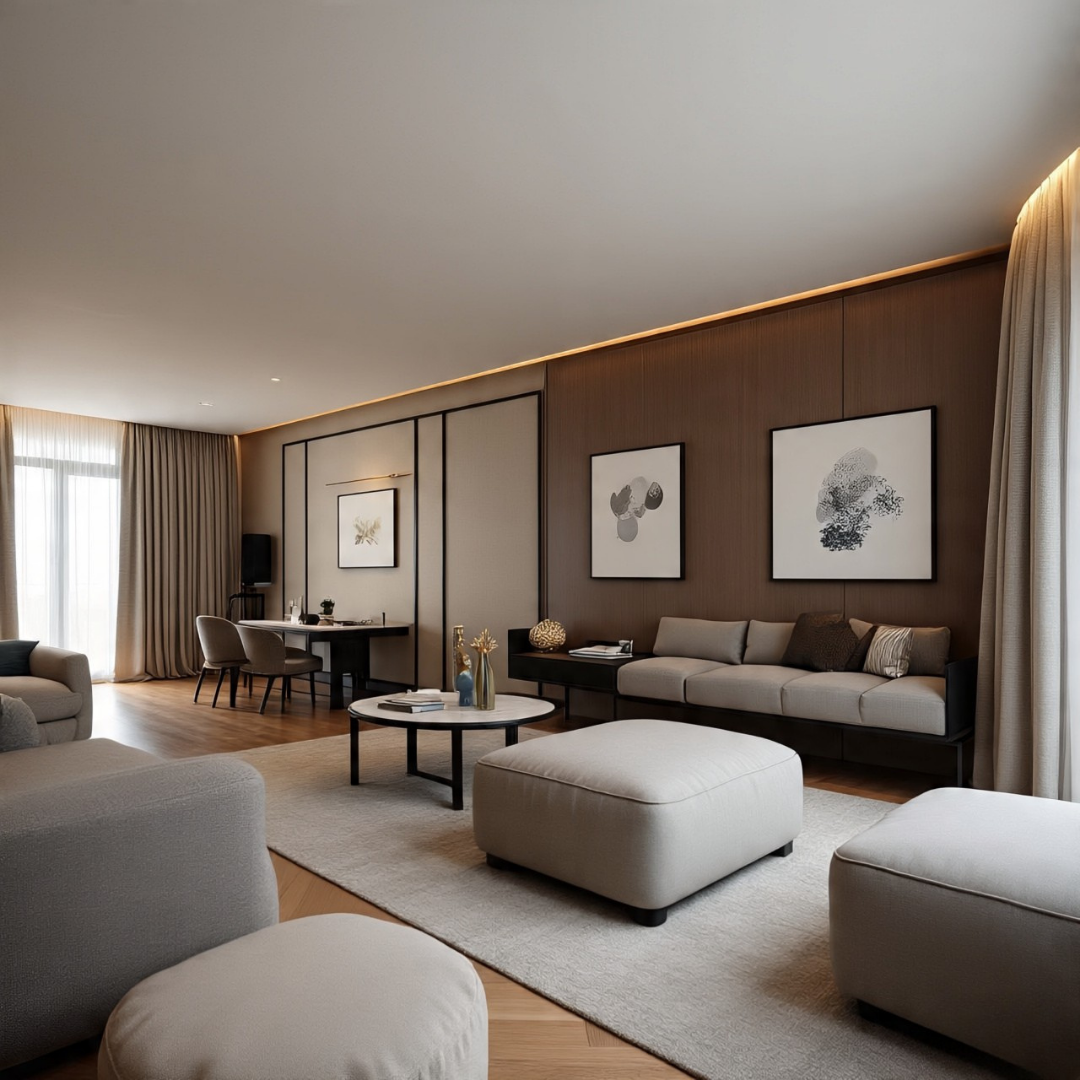

The Indian monsoon is a season of poetry and paradox. It brings life, rhythm, and renewal, yet for interiors, it can also mean damp corners, creeping mold, and a constant battle against humidity. At Blucap Interiors, we believe that true design excellence lies not only in aesthetics but in creating spaces that are resilient, refined, and deeply attuned to the nuances of their environment. Designing for the monsoon is not merely a functional exercise—it is an art of anticipating nature’s temperament and translating it into enduring comfort.
The essence of a monsoon-ready home is not in resisting nature but in collaborating with it. Blucap Interiors approaches each project with the conviction that interiors must be as fluid as the season itself. Large windows and airy layouts invite the drama of rain-washed skies while carefully considered overhangs, louvers, and pergolas ensure that beauty is never compromised by practicality.
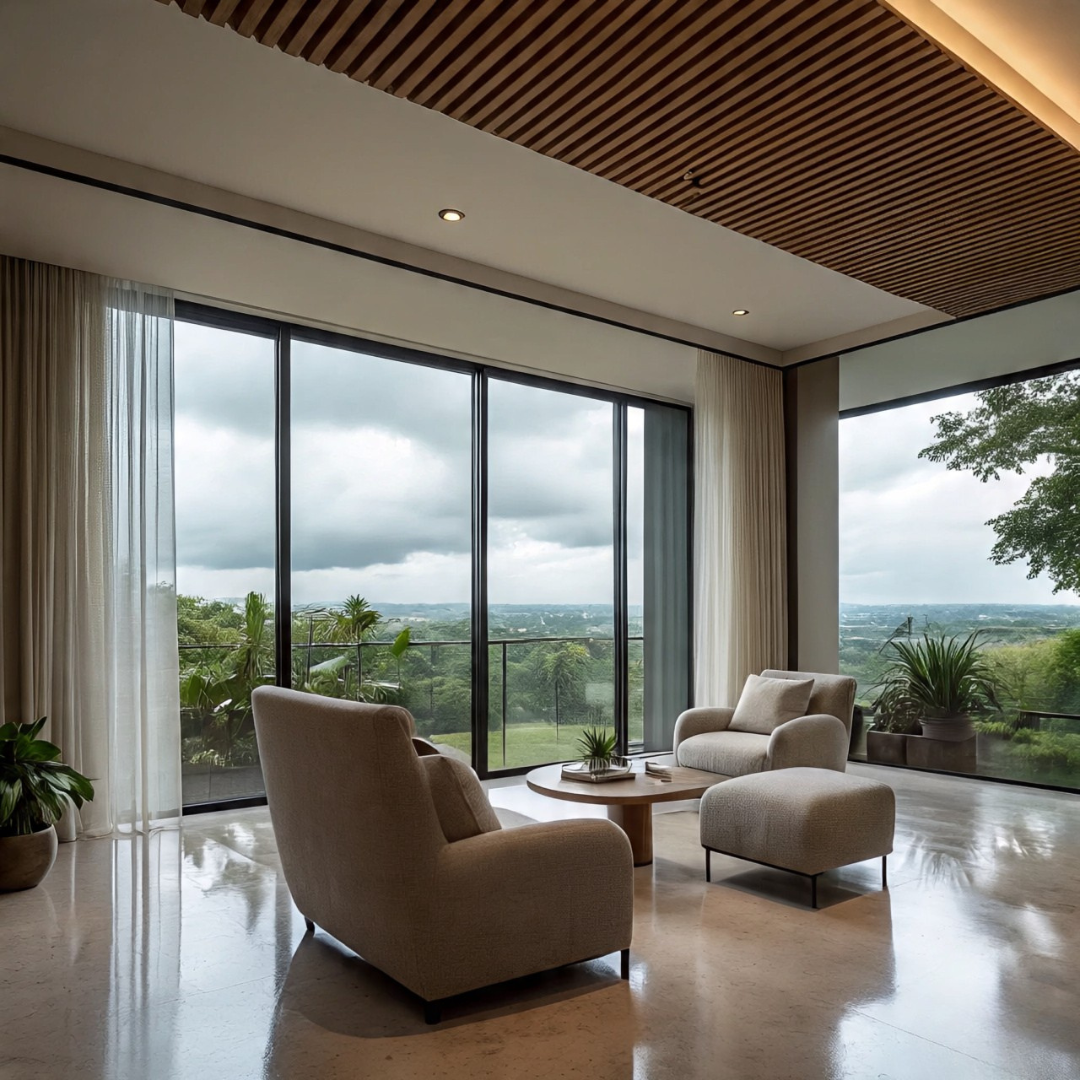
Humidity, the invisible adversary of the season, challenges wood, fabric, and paint alike. At Blucap Interiors, material selection is an exacting process. Engineered woods are preferred over untreated timber; finishes are sealed with precision to minimize swelling and warping; and breathable, natural fabrics such as linen and cotton are chosen for their ability to absorb moisture gracefully while aging beautifully. Even paint systems are curated to be mildew-resistant, ensuring that walls remain pristine long after the clouds disperse.
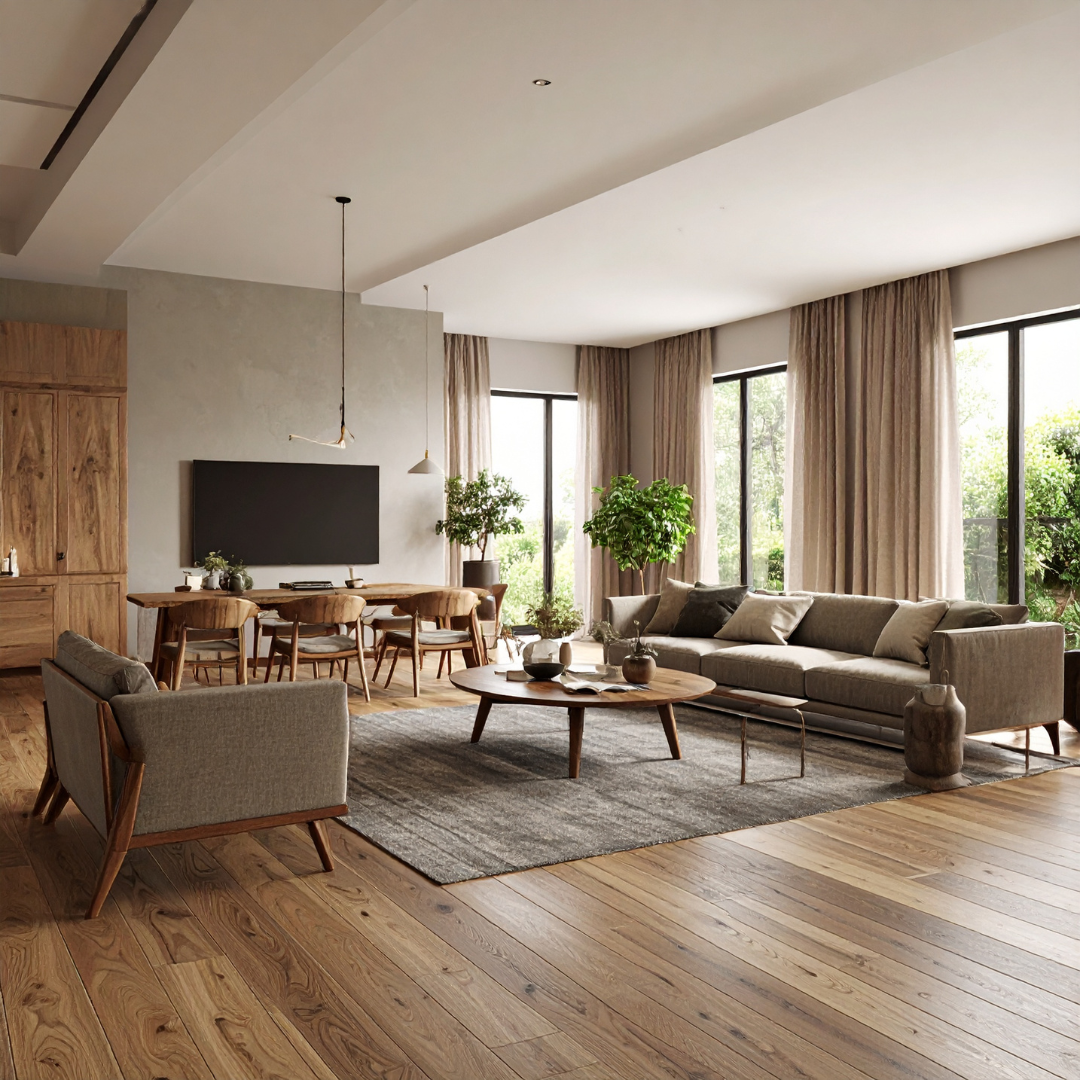
Mold, subtle yet insidious, thrives in the quiet corners of poorly ventilated rooms. Blucap Interiors deploys strategies that blend discretion with effectiveness. Cross-ventilation is designed into the very skeleton of a space, ensuring that fresh air circulates naturally. Storage solutions, often the first victims of musty odors, are lifted slightly off the floor, lined with moisture-resistant laminates, and integrated with airflow channels. The result is a home that breathes, resisting the stagnation that monsoons so often impose.

Storage in the Indian home has traditionally been about volume; at Blucap Interiors, we reinterpret it as an intersection of luxury and practicality. Monsoon-conscious wardrobes feature dehumidifying inserts, concealed vents, and intelligent shelving that allow air to circulate even when doors are closed. Kitchens are designed with sealed cabinetry and anti-rust hardware, transforming utility into a silent guardian against seasonal wear. By embedding innovation into craftsmanship, storage transcends its functional role to become a hallmark of refined living.

For Blucap Interiors, designing for the monsoon is not about defensive strategies—it is about crafting sanctuaries where nature is embraced without compromise. It is about hearing the rainfall against glass without fearing seepage or breathing in petrichor without worrying about musty upholstery. It is about homes that celebrate the season’s drama with composure and grace.
In a city like Bangalore, where the rains are both a gift and a challenge, monsoon-ready interiors are no longer a luxury—they are a necessity elevated to an art form. At Blucap Interiors, every design choice is a testament to our belief that interiors must endure as beautifully as they inspire, season after season.
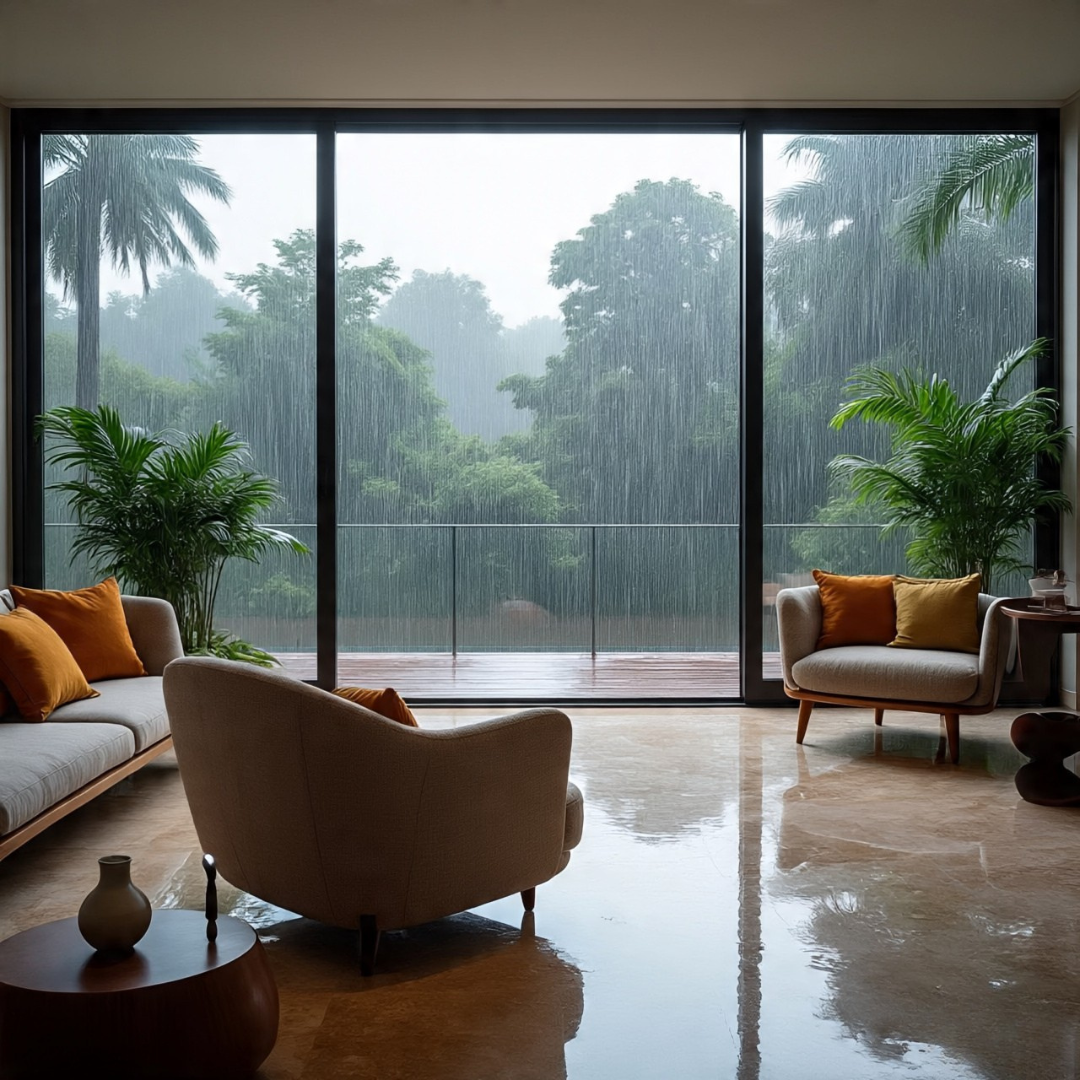

In the ever-evolving language of interiors, light has always been the poet. Yet, it is the shadow—the quiet counterpoint—that gives light its meaning, its depth, and its intrigue. At Blucap Interiors, we have long believed that great design is not just about what you see in the light, but also about what you feel in the shade. The dance between illumination and obscurity can transform a space from the merely beautiful to the truly unforgettable.
Every shadow tells a story. It drapes across the room like an invisible hand, softening a sharp corner, accentuating a texture, or leading the eye toward an architectural detail. At Blucap Interiors, we curate these visual narratives with deliberate precision. A strategically placed pendant light casting a lacy pattern on a dining table, or a cluster of floor lamps creating soft gradients in a lounge—these are the moments that invite you to linger, to explore, to feel.

Shadow play is most evocative when it interacts with texture. The grain of natural wood, the folds of a linen curtain, the undulations of a sculpted wall—these surfaces respond to light like an instrument to touch. In our projects at Blucap Interiors, we select materials not just for their aesthetic, but for the way they will converse with light and shadow throughout the day. The morning sun may kiss a stone wall with gentle dapples, while evening downlights elongate silhouettes, creating a moody, intimate atmosphere.

Too often, lighting is approached purely from a functional standpoint—bright for work, dim for rest. But shadows, when crafted intentionally, shape emotion. They can wrap a room in warmth, inspire a sense of mystery, or awaken the quiet drama of a space. At Blucap Interiors, we view every project as an opportunity to choreograph these emotional shifts. A gallery wall illuminated just enough to let shadows hover in the frame can make each piece feel alive. A corridor punctuated with pools of light can transform a mundane passage into a cinematic experience.
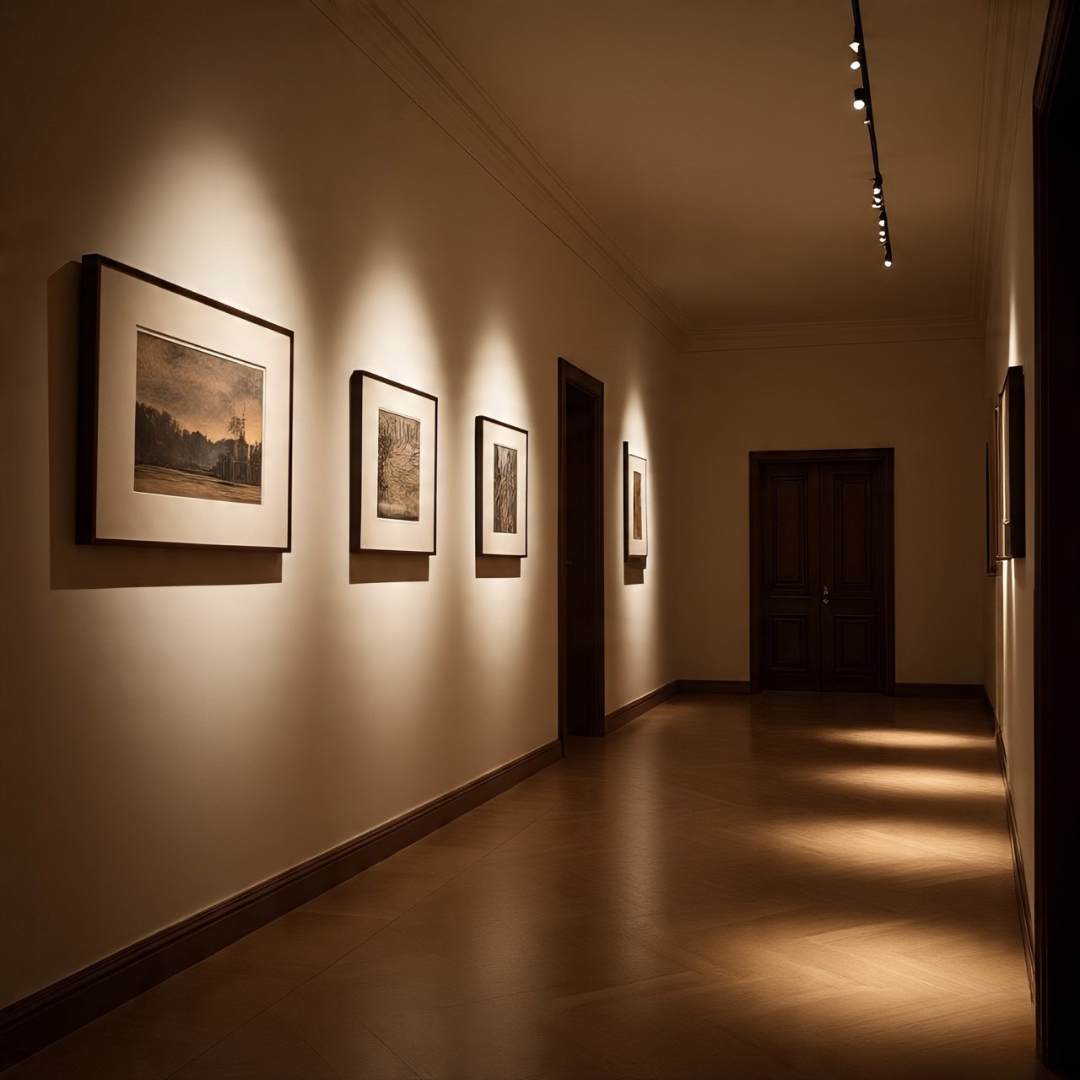
Architecture itself can be the greatest accomplice in shadow play. The curve of an archway, the cut of a ceiling recess, or the geometry of a staircase can create shadows that are almost sculptural. At Blucap Interiors, we work closely with form and structure, integrating lighting into the very bones of a space so that shadows become part of the architecture’s own language.
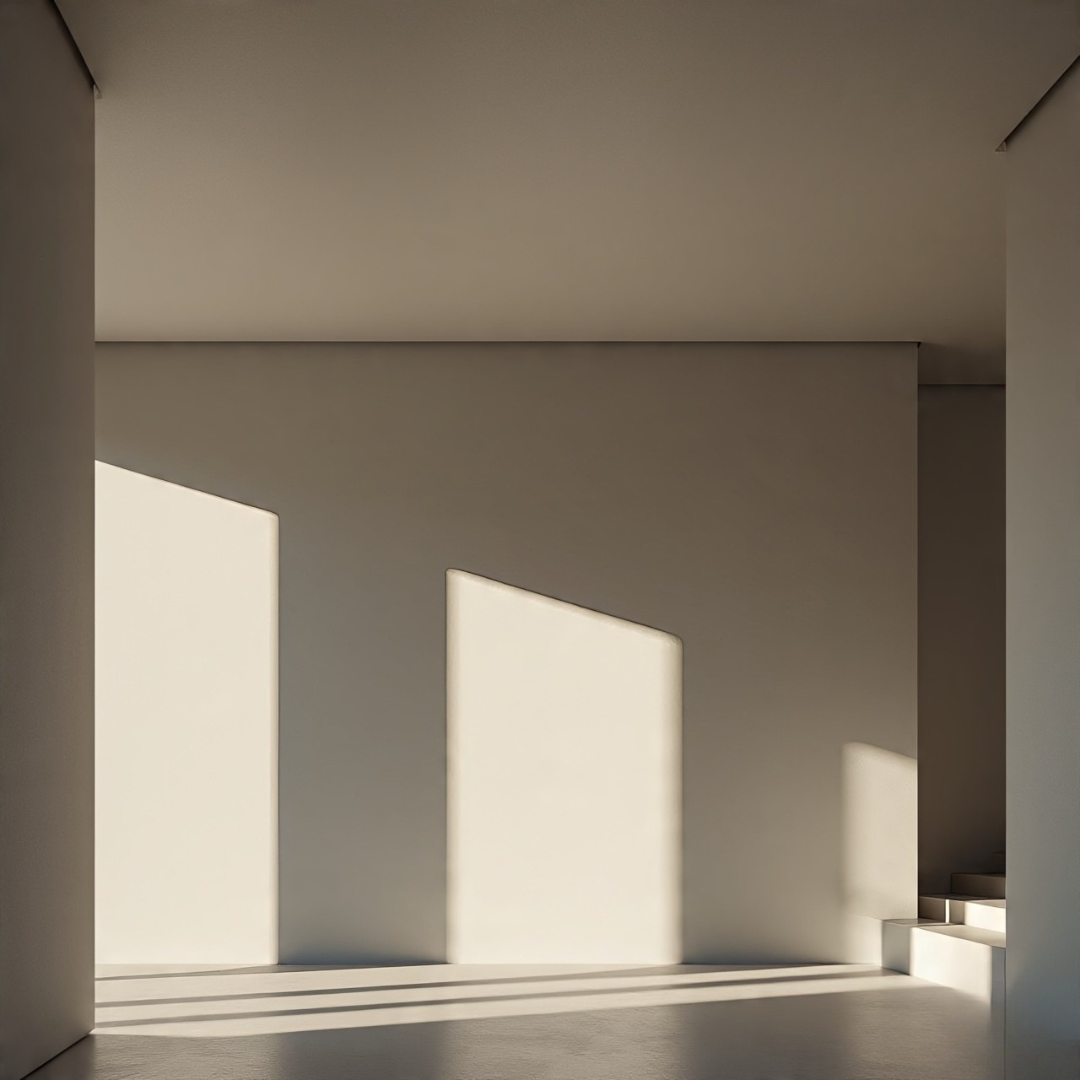
Shadow play is not a trend; it is a timeless design philosophy. From the moody chiaroscuro of Renaissance paintings to the minimalist elegance of Japanese interiors, shadows have always been the soul of spatial artistry. At Blucap Interiors, we honor this tradition while reinterpreting it for contemporary living—where technology, smart lighting systems, and an appreciation for natural light converge to offer infinite possibilities.
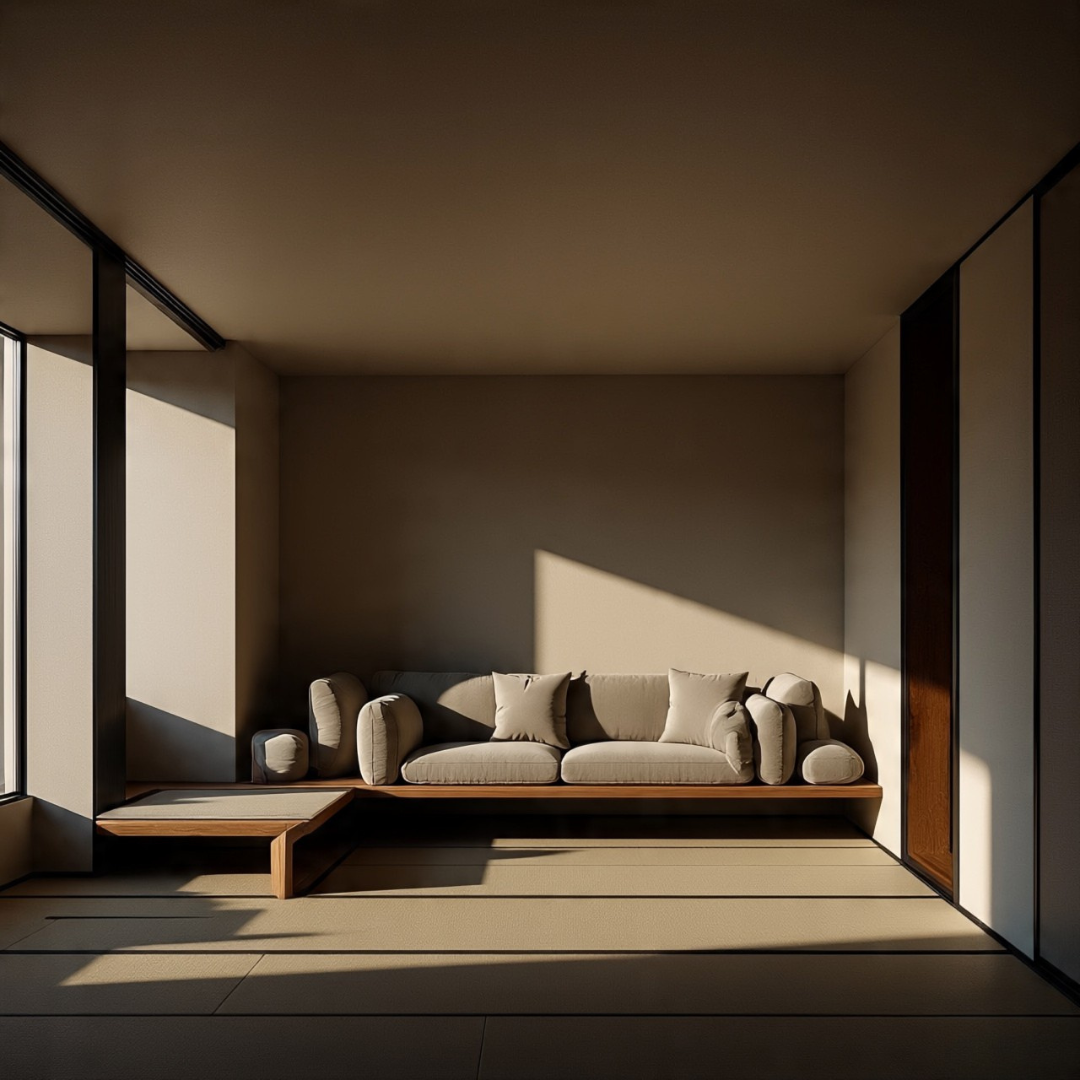
In the end, light reveals—but shadows captivate. The most memorable interiors are those that whisper rather than shout, inviting the eye to wander and the mind to dream. At Blucap Interiors, we do not just design spaces; we compose experiences where light and shadow play in perfect harmony, each giving meaning to the other.


In the world of luxury interiors, grandeur often lies in the details. Italian marble, custom millwork, curated artworks — each piece whispers a story of refinement. Yet, amid this careful curation, one silent disruptor can compromise it all: poor lighting.
At Blucap Interiors, we’ve witnessed firsthand how inadequate lighting can dull even the most opulent spaces. The tragedy is subtle — a spectacular texture that goes unnoticed, a colour palette that falls flat, or a room that feels heavy rather than harmonious. When lighting fails, luxury loses its voice.

Lighting in high-end interiors is not merely functional — it’s architectural. It sculpts form, casts mood, and reveals depth. But many homeowners, even in the luxury segment, overlook this vital layer. A crystal chandelier, however exquisite, cannot compensate for poorly layered ambient, task, and accent lighting.
At Blucap Interiors, we often walk into homes where costly finishes have been applied — yet the space feels underwhelming. Why? Because the lighting has not been designed in tandem with the interiors. It’s an afterthought — and in design, afterthoughts are expensive.

What many don’t realise is that lighting has a direct influence on how we feel. Spaces with flat, shadowless lighting feel lifeless. Rooms with poor daylight planning feel disconnected from nature. In luxury homes where comfort and emotional well-being are paramount, this becomes a critical design flaw.
Blucap Interiors believes that lighting should do more than just illuminate — it should evoke. A backlit onyx wall, a subtly lit cove ceiling, a reading nook washed in warm light — these are what elevate a space from luxurious to legendary.
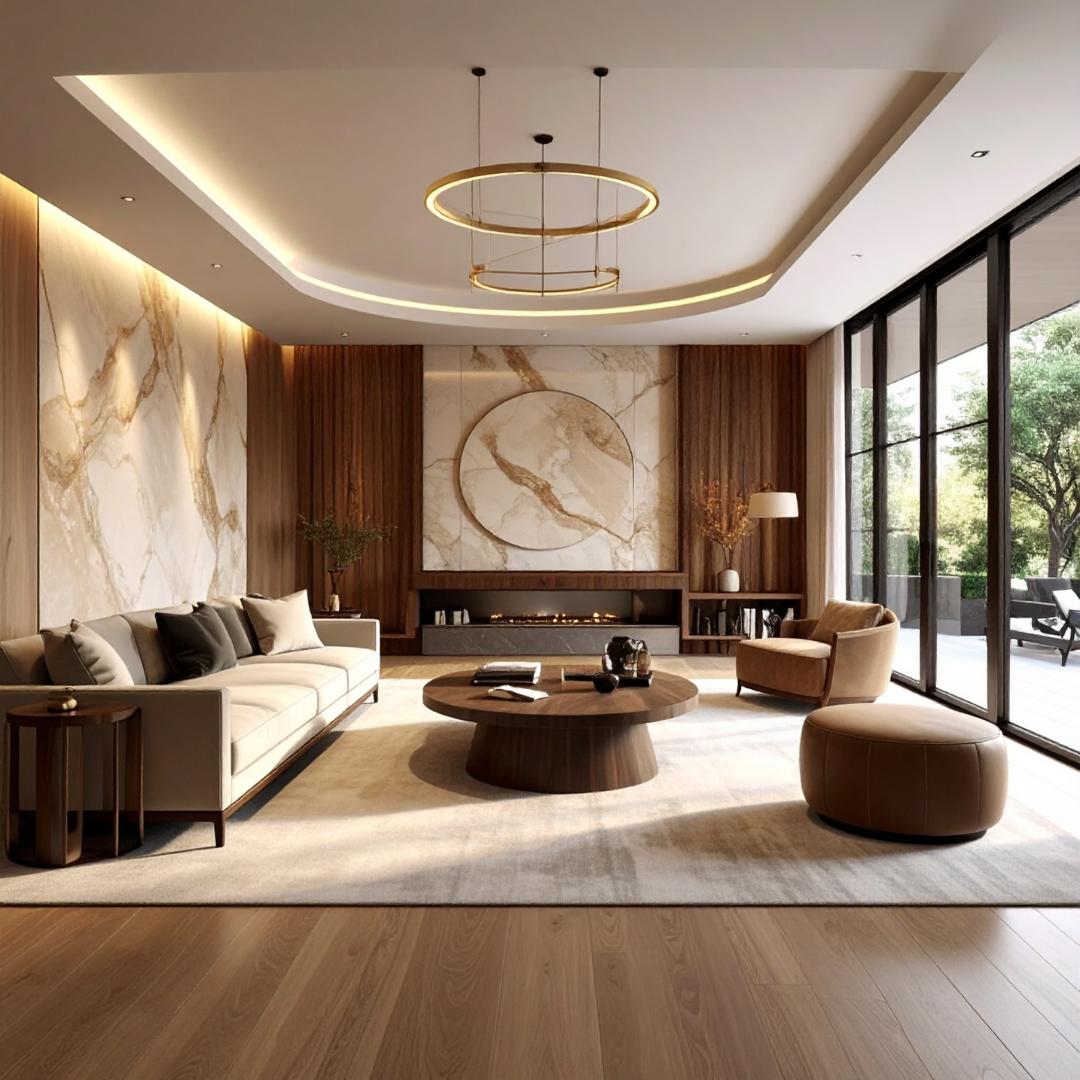
At Blucap Interiors, we address lighting from the very beginning of the design journey. It is embedded into the spatial planning process, ensuring every material, finish, and texture gets its moment under the right light.
The irony? Lighting errors in luxury homes are not just aesthetic — they are expensive to correct. Retrofitting lighting after interiors are done often involves tearing through ceilings, rewiring, and sometimes even redesigning the entire false ceiling layout. It’s an avoidable detour — if lighting is treated as integral, not incidental.
Blucap Interiors approaches every luxury project with a lighting plan as detailed as the furniture layout. We collaborate with lighting consultants where necessary and ensure that the emotional resonance of the space is never left to chance.
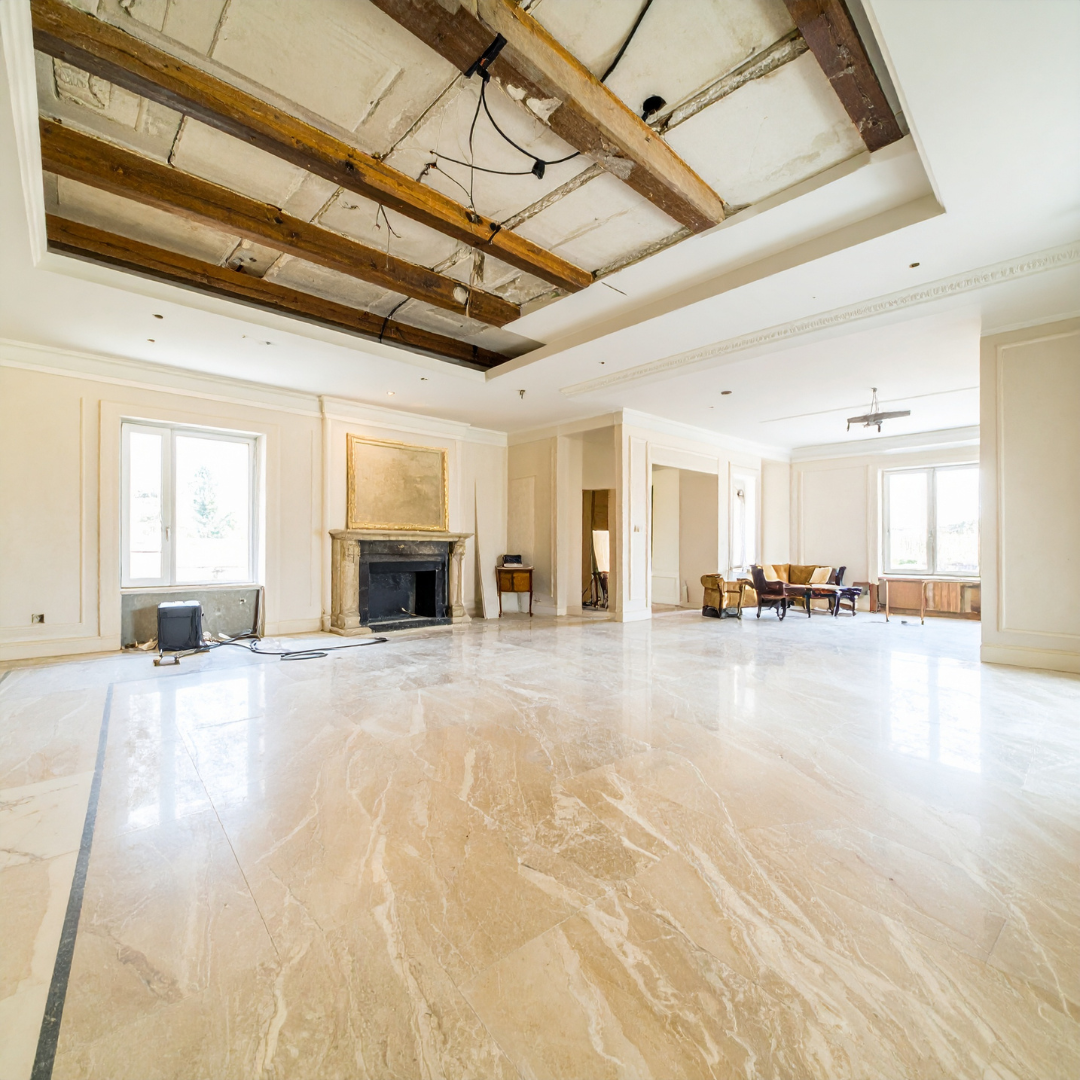
True luxury isn’t just in the materials used — it’s in how they are experienced. A silk wall covering that shimmers in warm uplight, a matte black wall that holds its gravity in directional lighting, a bathroom that feels like a private spa at twilight — these are all moments made possible by light.
At Blucap Interiors, we don’t just design spaces. We choreograph light, shadow, and soul. Because in the end, what your guests see — and more importantly, what you feel — depends entirely on how your space is lit.


In a world increasingly defined by conscious living and energy resilience, power-optimized homes are no longer a futuristic concept — they are a necessity. At Blucap Interiors, we believe that smart energy integration should be just as elegant as it is efficient. As homes become more reliant on renewable energy and back-up systems, interior designers must move beyond aesthetics and consider the practical aspects of power infrastructure. Here's how thoughtful interior planning can transform a house into a self-sustaining, seamlessly powered sanctuary.

The modern home is no longer just a shell for lifestyle; it’s a hub of systems — solar panels, battery storage, inverters, smart switches, and more. At Blucap Interiors, our approach begins with understanding the homeowner's power needs and integrating these systems into the design from the very first sketch.
This isn’t just about hiding cables. It’s about pre-planning space for battery units, aligning cabinetry to support inverter placements, and ensuring that electrical panels are both accessible and unobtrusive. In high-end homes, we often use bespoke joinery and hidden panels to conceal energy equipment without compromising functionality or form.
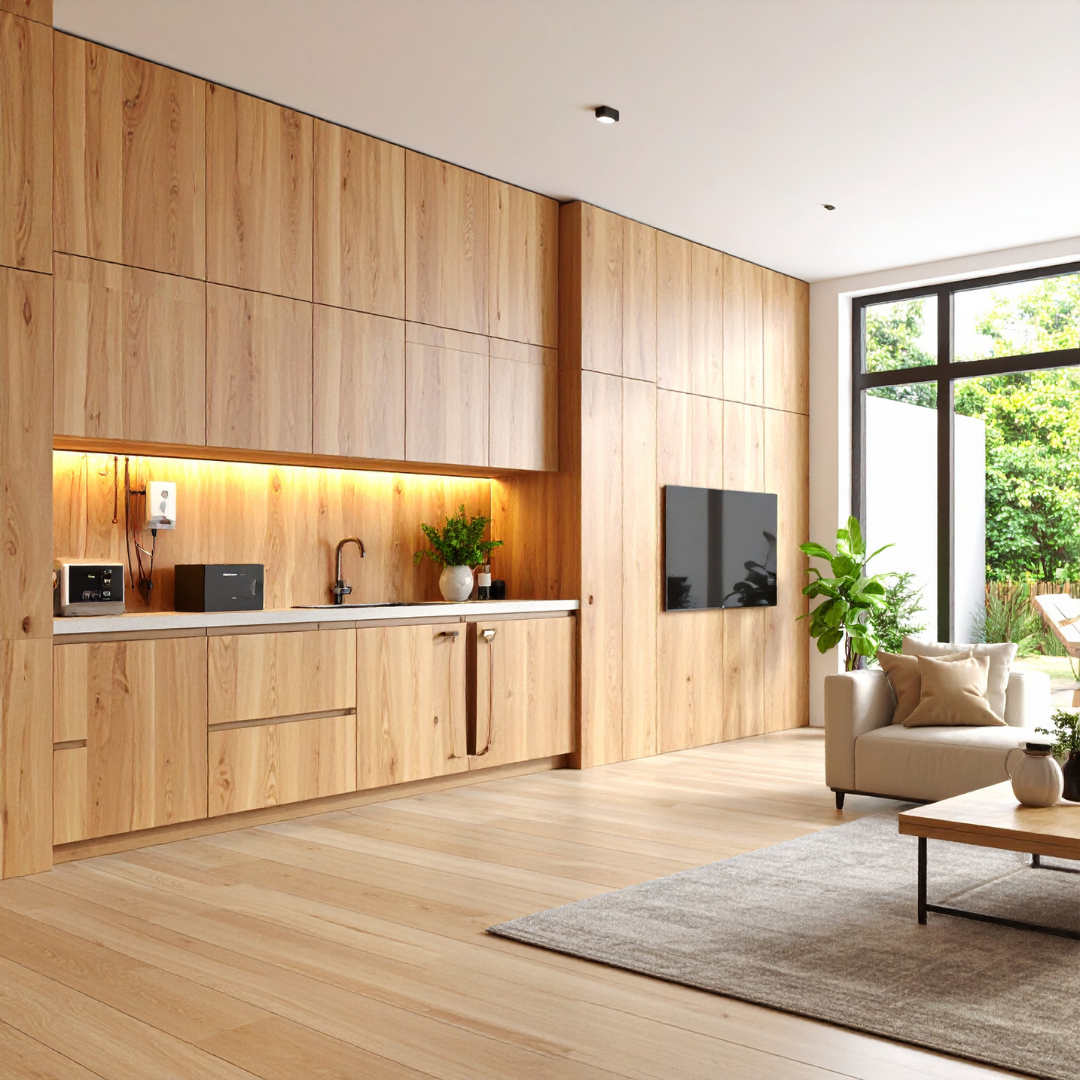
While rooftop solar panels are standard, true solar integration demands interior foresight. At Blucap Interiors, we factor in sun orientation, indoor energy use patterns, and battery charging zones within the home layout. For example, utility rooms are designed not just as laundry spaces but also as solar nerve centers, housing charge controllers and energy monitors.
Material selection also matters. Rooms with heavy solar-powered ventilation or lighting should feature finishes that minimize heat absorption while enhancing natural illumination. This subtle calibration of material, light, and technology defines our power-optimized design ethos.
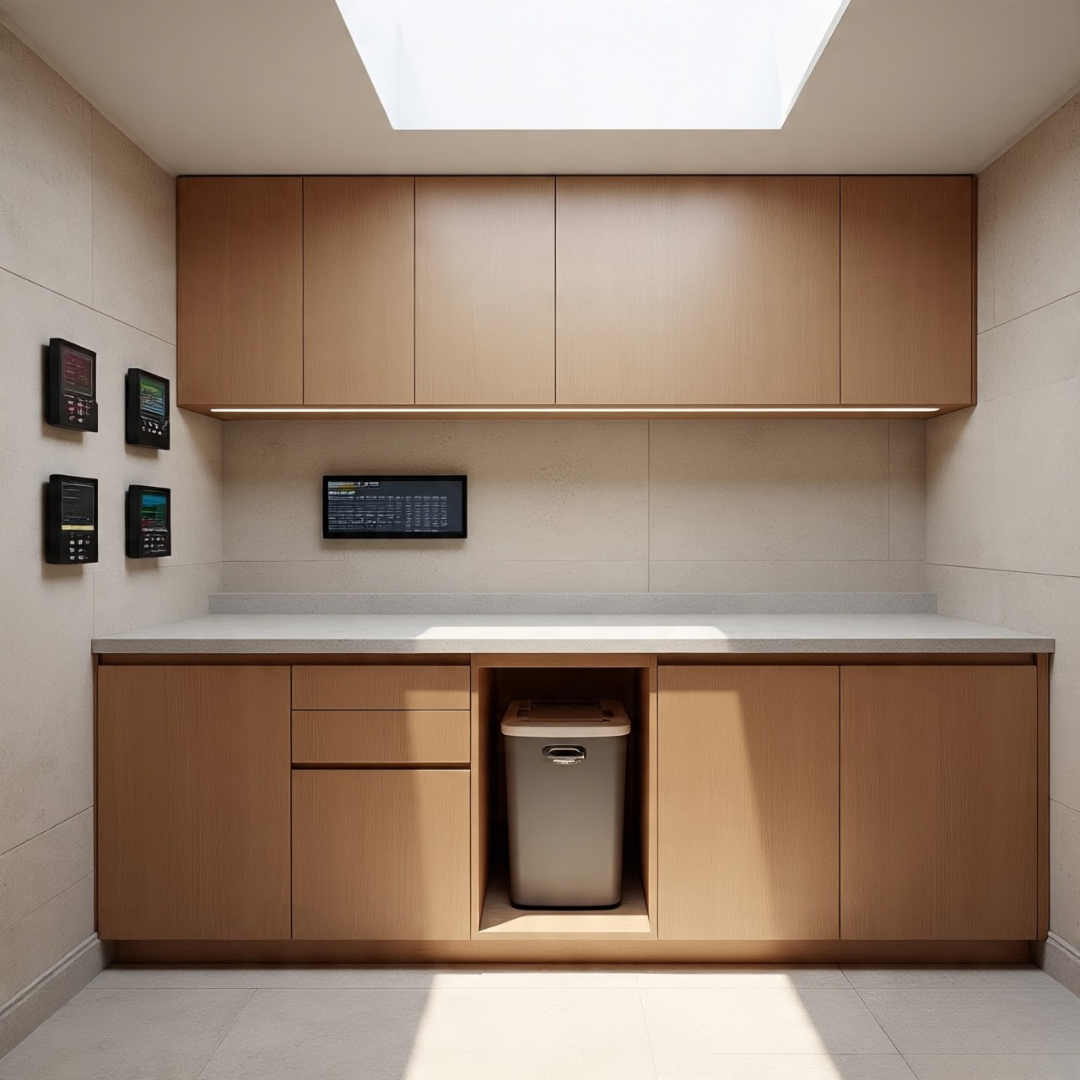
Inverter systems and battery banks are often treated as afterthoughts, leading to cluttered service areas or awkward retrofit solutions. Blucap Interiors approaches these elements as integral features. Our team ensures sufficient ventilation, noise buffering, and heat dispersion — all wrapped in clean, cohesive design.
We often carve out dedicated niches within cabinetry or create built-in enclosures that double as design features. These areas are planned to remain easily serviceable while blending harmoniously with the spatial narrative. In compact homes, we turn under-stair voids or dead corners into highly functional power hubs.
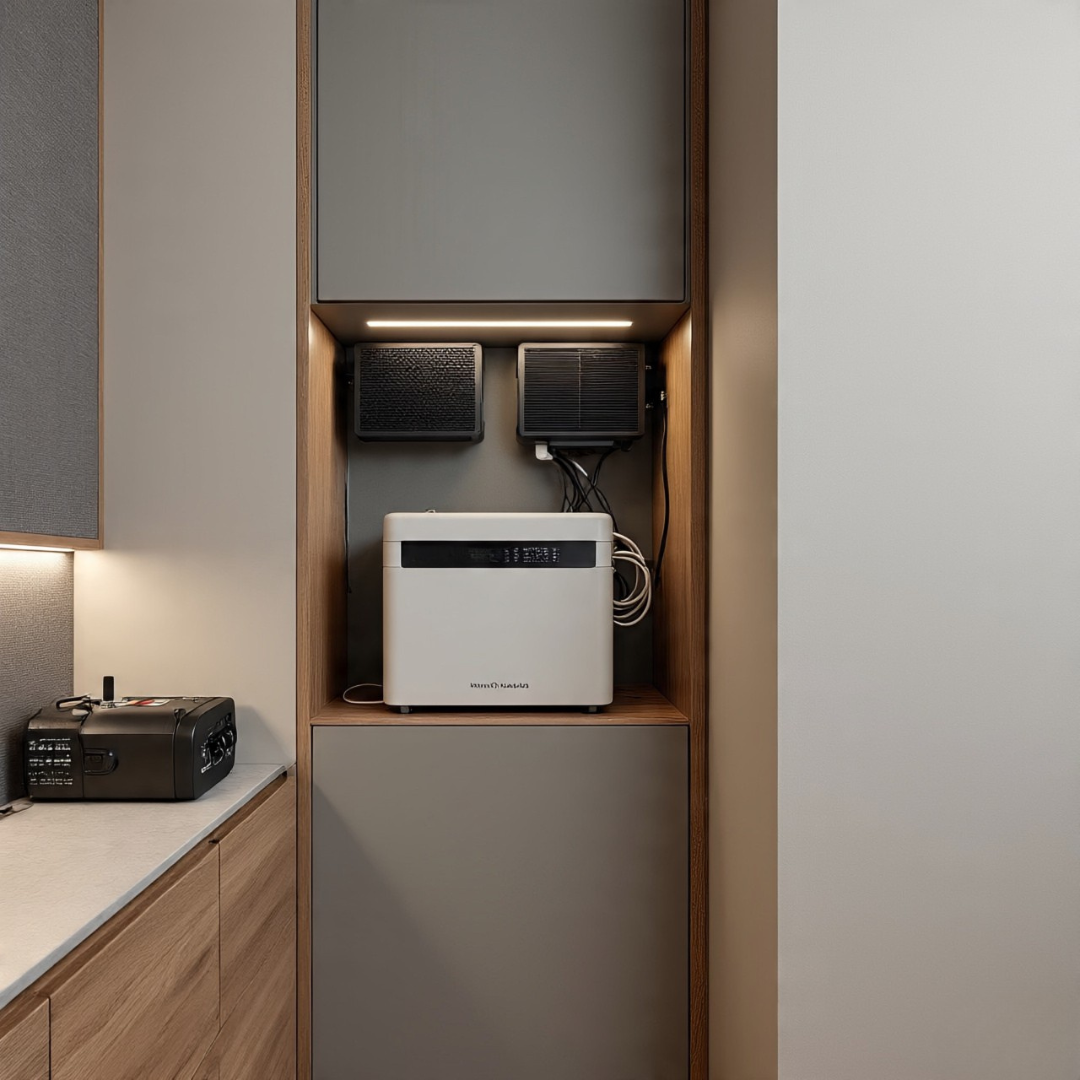
Power-optimized homes often include smart lighting, automated blinds, and app-controlled climate systems. The challenge lies in preventing technology from overwhelming the visual language of the space.
At Blucap Interiors, we integrate control panels, docking stations, and hubs into the design language using tactile finishes like leather-wrapped panels, fluted wood frames, or brushed metal inlays. By embedding intelligence into the very materials we use, we ensure that technology serves the space without dominating it.

One of the often-missed aspects in power planning is future expansion. Whether it's accommodating extra battery units or adding EV chargers, Blucap Interiors ensures that homes are designed for scalability.
We allocate technical shafts, conduit pathways, and upgrade-ready zones that allow homeowners to evolve their energy ecosystem without ripping apart existing interiors. Future-readiness is not just smart; it's sustainable.
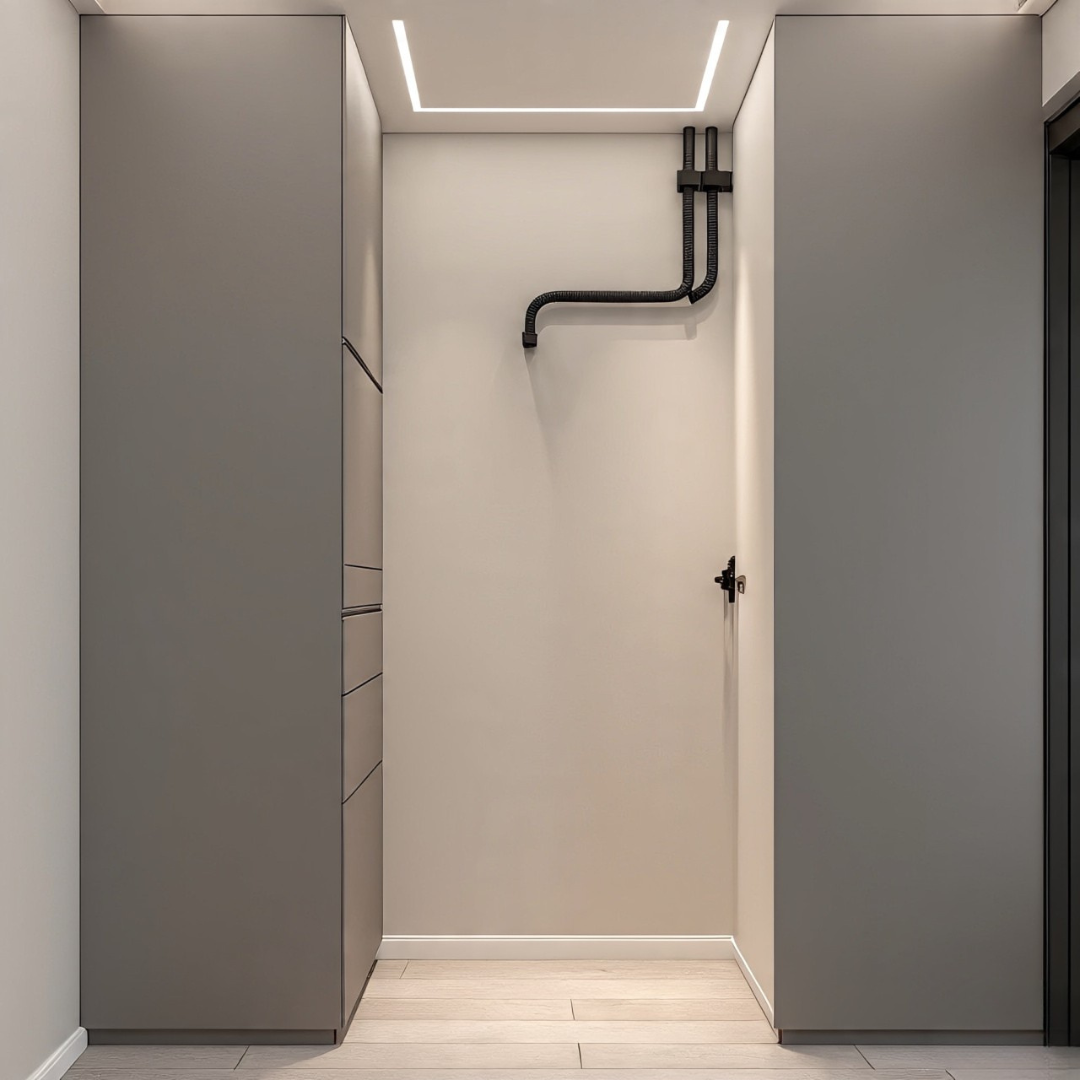
Power-optimized design is not simply about managing electricity; it's about shaping a lifestyle that respects energy, embraces technology, and elevates comfort. At Blucap Interiors, we craft homes that don’t just look beautiful but think smart.
Because true luxury today isn’t just about what powers your home — it’s about how your home empowers you.
Page 1 of 33